|
Kissinger's amoral, genocidal crimes revealed him to be a faithful representative of the US elites whom he served all his life Former US Secretary of State Henry Kissinger attends a ceremony in Berlin in January 2020 (AFP) Nothing notable distinguished the birth of Heinz Alfred Kissinger on 27 May 1923 to a German Jewish family in Furth, a city in Bavaria, who died on Wednesday at the age of 100. In 1938, when he was 15, he and his family fled Nazi Germany to New York before Kristallnacht. When the adolescent Heinz became Henry in the US, while retaining his heavy German accent, no one could have predicted that he would order the murder of hundreds of thousands of people as an adult, and become a millionaire as a result. In 1943, at the age of 20, Kissinger was drafted by the US Army. He became naturalised as a US citizen the same year. He served in the army intelligence division on account of his German fluency and was put in charge of a team in US-occupied Germany in charge of de-Nazification. After the war, Kissinger attended Harvard, graduating with a BA in political science in 1950 and a PhD in 1954. While still at school in 1952, he worked for the US government’s Psychological Strategy Board, formed by the White House in 1951 to propagandise against communism in support of the US and “democracy”. This was during the US invasion of Korea when US forces killed millions of people. 'Everything is destroyed'As US Air Force commander Major-General Emmett O’Donnell put it at a Senate hearing at the time: “Everything is destroyed. There is nothing standing worthy of the name… there were no more targets in Korea [to bomb].” US psychological warfare still refers to US genocidal crimes in the Korean peninsula as the “Korean War”.
In 1952, Kissinger ran an article in the journal Confluence, which he edited, by Ernst von Salomon, a convicted murderer for his participation in the assassination of the foreign minister of the Weimar Republic. German Jewish emigre contributors to the journal, including Hannah Arendt and Reinhold Niebuhr, were not pleased. Kissinger joked with a friend that the article was considered “a symptom of my totalitarian and even Nazi sympathies”. Nuclear policyHe was also study director in nuclear weapons and foreign policy at the Council on Foreign Relations in 1955-56, and published his book Nuclear Weapons and Foreign Policy in 1957, arguing that the US should use tactical nuclear weapons on a regular basis in war to ensure victory. Critics would later parody him as “Dr Henry Killinger”, as the cartoon show Venture Bros did in the 2000s. His right-wing authorised biographer, Niall Ferguson, states that the argument of Kissinger’s book “might very easily be presented as evidence” that he was “the inspiration for Stanley Kubrick’s Dr. Strangelove”. Kissinger finally received tenure at Harvard with the support of the dean, McGeorge Bundy, despite faculty objections that his book on nuclear weapons was not scholarly. He did not limit himself to academe, but became a consultant to politicians and presidential candidates, such as Nelson Rockefeller. When Bundy became President John F Kennedy’s national security adviser in 1961, Kissinger joined him as an adviser, a position he would retain under Lyndon Johnson. In light of Kissinger’s sympathy for the use of tactical nuclear weapons, he was invited to visit Israel in 1962, and again in 1965, most likely by Israel’s architect of the country’s nuclear program, Shimon Peres. Recent documents reveal that in his report to the US embassy in Tel Aviv in 1965 based on meetings with Israeli officials and scientists, he already believed that Israel was developing nuclear weapons, a program he looked upon with “great understanding, if not sympathy”. This would lead him in 1969, as Nixon’s national security advisor, to broker the understanding of the Nixon administration for Israel’s already developed nuclear weapons program. Even though Kissinger believed in the futility of the US war in Vietnam, he conspired with Richard Nixon’s electoral campaign in 1968 by leaking information to it from the Paris Peace Talks to prolong the war, lest the Democrats win the elections. Once Nixon was elected, Kissinger came on board as national security adviser in January 1969, a position he occupied until 1975. Nixon referred to him as “Jew boy”, but it seems right-wing antisemitism never bothered him, as he had been a lifelong conservative Republican. He also served as secretary of state from September 1973 until January 1977. Ruthless Cambodia campaignDetermined to defeat the South Vietnamese National Liberation Front and North Vietnam, Kissinger decided to intensify the secret tactical bombing of Cambodia, which had started under Johnson in 1965, into a ruthless campaign of carpet bombing that continued until 1973. In early March 1969, Kissinger told Nixon: “Hit them!” By 1973, between 150,000 and half a million Cambodians were killed. Kissinger callously described the excessive bombing by saying: “We would rather err on the side of doing too much.” Kissinger personally supervised the schedules of the bombing runs and the allocation of planes from one area to the other. He reportedly loved playing “bombardier”. When he and Nixon started to bomb North Vietnam again, Kissinger was most excited at the “size of the bomb craters”. In keeping with his support for the use of nuclear weapons, he devised a plan to nuke North Vietnam in 1969 as part of an operation called Duck Hook. Kissinger speaks with then-US President Richard Nixon in Salzburg, Austria, in 1972 (AFP) While some in his social circles referred to him as “cuddly Kissinger” and he was described in women’s magazines as “always friendly, particularly with women”, his sweet-tongued persona seemed nowhere in sight when he spoke of those women he hated, such as former Indian Prime Minister Indira Gandhi, whom he called a “bitch” and a "witch", while “the Indians” were “bastards”. Indeed, Christopher Hitchens asserted, regarding Kissinger’s popularity among the elite, that “Kissinger is not invited and feted because of his exquisite manners or his mordant wit (his manners are in any case rather gross, and his wit consists of a quiver of borrowed and secondhand darts)”, but rather because he exuded raw power. Kissinger was less like Dr Strangelove and more like the fictional character Dr Evil in the Austin Powers films, though with much less charm. Coups and white supremacyIn 1971, Kissinger backed former Pakistani President Yahya Khan’s genocidal campaign against East Pakistan (Bangladesh), and in 1975, he endorsed the Indonesian dictator Suharto’s genocidal war on the people of East Timor, in which a third of the population was killed. Suharto had come to power through a US-supported coup in 1965 that unleashed massacres against up to one million Indonesians as suspected communists. As for the 200,000 dead in East Timor, Kissinger was unmoved: “I think we’ve heard enough about Timor.” When, in 1970, the socialist Salvador Allende was popularly elected as president of Chile, Kissinger commented: “I don’t see why we need to stand by and watch a country go Communist due to the irresponsibility of its own people.” He pushed Nixon to organise a violent coup against Allende, subjecting the country to fascist rule for the next decade and a half, with thousands killed by the US-supported military junta.
As for the Middle East, aside from strengthening ties with the Zionist settler-colony of Israel, which became a major US ally during the Nixon and Ford years, Kissinger armed Israel to the teeth during the 1973 war in order “to prevent an Arab victory”. His emergency military help to Israel during the war reversed the early victories of the Egyptian and Syrian armies and ensured that Israel won the war. He also ensured that no US relations could be established with the Palestine Liberation Organisation. In September 1975, Kissinger signed a “memorandum of understanding” with the Israelis committing the US not to recognise or negotiate with the PLO unless it recognised Israel’s “right to exist” as a racist, Jewish-supremacist state. Former PLO chairman Yasser Arafat would finally do so in 1988 in Geneva, and again in 1993 with the signing of Oslo. Horrifying recordIn effect, Kissinger ensured the perpetuation of Israeli colonisation of Palestinian lands for decades to come. He was the architect of former Egyptian President Anwar Sadat’s surrender to Israel and selling out of Palestinian rights at Camp David, and designed the so-called American-sponsored “peace process”, which has defined US policy towards Palestinians and Israel and has since brought about the ongoing calamities in much of the Arab world. Amid all of Kissinger’s war-mongering around the world, helping fascist dictators come to power and supporting white supremacy in settler-colonies in southern Africa and Palestine, he is also credited with pursuing detente with the Soviet Union and opening diplomatic relations with China. He even received the Nobel Peace Prize for negotiating “peace” with North Vietnam amid his savage bombing of Cambodia. Kissinger would go on to advise subsequent US presidents and support their wars, including Ronald Reagan and George W Bush. In 1982, he established his own consultancy firm, Kissinger Associates, with a highly secretive client list, to advise US and European imperial corporations and banks, Third World western-supported dictators, and white supremacist settler-colonies. His last reported net worth was around $50m. Kissinger’s horrifying record, however, has endeared him to many US liberal politicians. The Clintons loved him dearly and attended his birthday parties. Hillary Clinton could not stop praising him for the advice he had given her when she served as secretary of state, insisting that “Kissinger is a friend”. Former President Barack Obama cited Kissinger as supporting his own views on Iran during the 2008 presidential campaign, but Kissinger rebuffed him. In 2010, Obama’s administration used Kissinger’s murderous policies in Cambodia to justify Obama’s own murderous drone killings of American citizens and non-Americans around the world. No maverickIn 2016, Obama’s defence secretary gave the accused war criminal an award “honouring Dr Henry A Kissinger for his years of distinguished public service”. In the last few years, he has been invited by several liberal US universities, including the Massachusetts Institute of Technology, Yale and New York University, which marked the 45th anniversary of his receiving the Nobel prize. It was mostly socialists who protested him. In April 2018, Kissinger was a guest at Trump’s first state dinner at the White House, alongside Trump’s billionaire friends. He would even weigh in on the war in Ukraine, about which he changed his mind several times. In his book about Kissinger, Hitchens charged him with war crimes, crimes against humanity, and offences “against common or customary or international law, including conspiracy to commit murder, kidnap, and torture”. Hitchens, however, did not seem to realise that Kissinger was no maverick, and each of those crimes should be levelled against the US government more generally. Kissinger and then-US Secretary of State Hillary Clinton leave a 2011 event in Washington (AFP) Indeed, all the imperial murderous policies that Kissinger pursued did not deviate from US foreign policy before or after him. It is that which accounted for his popularity among the American business and intellectual elite, liberals and conservatives alike. As Meaney put it, blaming one man for the country’s sins serves everyone: “Kissinger’s status as a world-historic figure is assured, and his critics can regard his foreign policy as the exception rather than the rule.” Kissinger’s amoral, genocidal crimes are no more monstrous than the crimes of the US since its establishment. If anything, Kissinger was but a faithful representative of the criminal US elites whom he served all his life - and who guaranteed him a long life of fame, wealth and luxury. Kissinger died at his home in Connecticut on 29 November 2023, the International Day of Solidarity with the Palestinian People. The views expressed in this article belong to the author and do not necessarily reflect the editorial policy of Middle East Eye. AuthorJoseph Massad is professor of modern Arab politics and intellectual history at Columbia University, New York. He is the author of many books and academic and journalistic articles. His books include Colonial Effects: The Making of National Identity in Jordan; Desiring Arabs; The Persistence of the Palestinian Question: Essays on Zionism and the Palestinians, and most recently Islam in Liberalism. His books and articles have been translated into a dozen languages. This article was produced by Middle East Eye. Archives November 2023
0 Comments
11/30/2023 Israeli child “burned completely” by Israeli tank fire at kibbutz By: Ali Abunimah & David SheenRead Now
Israeli girl Liel Hatsroni, 12, was killed after Israeli forces used a tank to shell a house in Kibbutz Be’eri on 7 October, according to an Israeli who survived the violence. (via Twitter)
An Israeli child completely incinerated at Kibbutz Be’eri was killed by two tank shells shot by Israeli forces at the end of an hours-long gun battle, a survivor of the same carnage told the Israeli state broadcaster Kan earlier this month.
Yasmin Porat, taken captive with at least a dozen other Israeli civilians on 7 October, told Kan radio that a fellow captive, 12-year-old Liel Hatsroni, survived to the end of the battle and only died when Israeli forces fired two tank shells at the house where they were held hostage by Hamas fighters. Hatsroni’s obliteration by Israeli tank fire emerged this month after her family decided to mourn her with a public funeral, even though the government had not officially pronounced her dead. Although Hatsroni’s 69-year-old grandfather Aviyah and twin brother Yanai were buried two weeks after their deaths on 7 October, her 73-year-old aunt and guardian Ayala was only buried on 15 November, the day after Israel officially declared her dead. On that day the Hatsroni family also held funeral rites for Liel, though the state still listed her as missing because “to this day they have not found any of her remains,” Yasmin Porat told Kan on 15 November. You can listen to Porat speak in that interview in this video, with English subtitles:
Three days later, the Hatsroni family was informed that archaeologists working with the Kahanist-run Israel Antiquities Authority had finally identified Liel’s remains at the house, Ynet, an Israeli news site, reported.
Although at least 50 people died in that particular bloodbath – and at least 10 of them were Israeli civilians – Porat herself left the battle intact, when one Hamas commander, out of a force that numbered about 40 fighters, surrendered. Israeli forces called to the scene instructed the Hamas commander to come out with Porat, effectively turning her into a human shield. “Two big booms”
In her 15 November interview on Kan’s Kalman Liberman program, Porat recounts how, of the dozen or so Israelis she was held captive with on 7 October, only one other person – Be’eri resident Hadas Dagan – survived the ordeal.
The two tank shells fired into the house at the very end of the battle killed both women’s partners, the young Liel Hatsroni and everyone else in the house who was still left alive up to then, she said. At around 7:30 pm, after some four hours of crossfire consisting of “hundreds of thousands of bullets,” Porat peered from behind Israeli lines and observed an Israeli tank firing two shells into the small kibbutz house. “I thought to myself, why are they shooting tank shells into the house,” Porat told Kan. “And I asked one of the people who was with me, why are they shooting? So they explained to me that it was to break the walls, in order to help purify the house.” At the time, the captive Hadas Dagan was caught for hours in the crossfire between the two sides, lying face down on the grassy lawn. When the Israeli tank shells hit, Dagan felt their impact throughout her whole body, she told Porat after finally emerging from the combat zone in tatters. “Yasmin, when the two big booms hit, I felt like I flew in the air,” Porat recalls a disheveled Dagan telling her minutes after the battle ended. Dagan was still covered in her husband’s blood, her hair standing on end, full of dust and styrofoam. “It took me two or three minutes to open my eyes, I didn’t feel my body. I was completely paralyzed,” Dagan told her, Porat says. Upon regaining consciousness, Dagan realized that the captives who had been lying on either side of her – her husband Adi Dagan and Porat’s partner, Tal Katz – had just died from tank shell shrapnel. “When I opened my eyes, I saw that my Adi is dying,” Porat recalls Dagan saying. “Your Tal also stopped moving at that point.” Though neither Porat nor Dagan witnessed the moment that fellow hostage Liel Hatsroni was incinerated by Israeli tank shells, they both immediately understood that she had died in the explosions, because after screaming for hours on end, since the beginning of the battle, she suddenly went silent. “I remember, when I was there for the first hour, she did not stop screaming,” Porat told Kan, and noted that her recollections of Hatsroni dovetailed with what Hadas Dagan told her. “The girl [Liel Hatsroni] did not stop screaming all those hours. She didn’t stop screaming,” Porat recalls Dagan telling her. “Yasmin, when those two shells hit, she stopped screaming. There was silence then.” “So what do you glean from that? That after that very massive incident, the shooting, which concluded with two shells, that is pretty much when everyone died,” Porat told Kan. Six weeks after the ordeal of 7 October, Porat concludes that Liel Hatsroni’s remains had yet to be recovered because Israeli tank shelling totally incinerated her and most of the house, finishing off many Hamas fighters and any other surviving captives. “Part of the house is torched. The house of Hadas and Adi [Dagan] no longer exists. I don’t know how that happened,” Porat said. “If you ask me, I estimate, based on what happened in other houses, she [Liel Hatsroni] apparently burned completely.”
That Israel confirmed the death of Liel’s aunt Ayala only 38 days after 7 October suggests that she, too, was likely burned beyond recognition by Israeli tank shells.
A day after Porat’s revelation on live radio that Liel Hatsroni had been torched to death by tank fire, an Israeli official confirmed that she was not nearly the only person incinerated by Israel on 7 October and in the days that immediately followed. Israeli government spokesperson Mark Regev inadvertently admitted in a 16 November MSNBC interview that some 200 bodies Israel had claimed for weeks were those of Israelis burned to death by Palestinians were now known to be the bodies of Palestinian fighters burned to death by Israel. “We originally said, in the atrocious Hamas attack upon our people on October 7th, we had the number at 1,400 casualties and now we’ve revised that down to 1,200 because we understood that we’d overestimated, we made a mistake. There were actually bodies that were so badly burnt we thought they were ours, in the end apparently they were Hamas terrorists,” Regev told MSNBC host Mehdi Hasan. Meanwhile, Hatsroni’s death is being used by Israeli politicians to incite and justify Israel’s vengeful slaughter of thousands of Palestinian children in Gaza.
Cracks in official narrative
After burning the bodies of some 200 Palestinian fighters, 12-year-old Israeli Liel Hatsroni, and an unknown number of other Israeli civilians, then lying to the world about who burned them and using their deaths and suffering as a pretext to destroy Gaza and annihilate more than 14,000 Palestinians there so far, Israel is finally starting to come clean about its actual contribution to the death toll on that horrific day.
Last week, Israeli daily Haaretz reported that a police investigation into the events of 7 October “indicates that an IDF [Israeli military] combat helicopter that arrived to the scene and fired at terrorists there apparently also hit some festival participants” at the Supernova rave held near the Gaza boundary that day. Another police source criticized Haaretz and appeared to row back the statement the following day, but did not deny that Israel had killed some Israelis. The first cracks in the official Israeli narrative about 7 October came from testimony by Yasmin Porat, a 44-year-old mother of three who fled the Supernova rave with her partner Tal Katz and found temporary shelter at Kibbutz Be’eri with local residents Adi and Hadas Dagan – until mid-afternoon. At that point, Hamas fighters captured all four and took them next door, pooling them with another group of eight or more kibbutz residents.
In her initial interview with Kan on 15 October, first reported in English by The Electronic Intifada the following day, Porat revealed that at least some of the dozen-plus Israelis held hostage with her at Be’eri died as a result of Israeli gunfire.
Asked by Kan radio host Aryeh Golan if some of the Israeli casualties of that battle had died by friendly fire, Porat answered “undoubtedly.” Porat also told Kan and other Israeli media outlets that she and the other Israelis were not mistreated while held by Hamas fighters on 7 October. “They did not abuse us. They treated us very humanely,” Porat told Kan. “They give us something to drink here and there. When they see we are nervous they calm us down. It was very frightening but no one treated us violently.” The goal of her Hamas captors was to trade captives for Palestinian prisoners incarcerated by Israel, Porat insists. The 40 or so Hamas fighters who held the Israelis captive for six hours intended to take Porat and the other Israelis back to Gaza – and indeed, they could easily have done so, she said. The fighters mistakenly assumed, however, that Israeli forces caught by surprise at dawn would have already regrouped by midday and encircled their position by the afternoon. “They could have left with us back and forth 10 times,” said Porat. There is an increasing body of evidence that either through recklessness or by design, Israeli forces were responsible for killing a not insignificant number of Israelis on and after 7 October. Yasmin Porat has, by now, been interviewed by just about every Israeli mainstream media outlet, but it still seems as if Israel isn’t listening to her. Porat and Hadas Dagan, the only survivors from their group of captives, affirm that two Israeli tank shells set the house they were held in on fire and killed at least three of the people in their group: both of their partners and 12-year-old Liel Hatsroni. In announcing Hatsroni’s death last week , Ynet nevertheless concluded that Hamas fighters “murdered everyone. Afterwards, they torched the house.” AuthorAli Abunimah is executive director of The Electronic Intifada.
This article was produced by The Electronic Intifada
ArchivesNovember 2023 11/29/2023 Are There Any Paranoids in the Stadium Tonight? Two Nights in Santiago With Roger Waters By: Vijay PrashadRead NowNo one does a stadium show like Roger Waters. The music, of course, is resplendent, but so too are the soundscape, the images, the giant sheep and pig, the lasers, the films, the energy of the fans who—despite the language differences—sing along… “Did you exchange a walk-on part in the war for a lead role in a cage?” It is a riot of emotions. The quiet calm of Santiago is broken by familiar sounds and necessary feelings: yes, we are here; yes, we exist; yes, we must resist. Santiago is a city blistered by social inequality. For two nights, Roger Waters played at the Estadio Monumental in Macul, a commune of Santiago that is more middle-class than the rest of the city although still not immune from the sharp divides that produced the massive social unrest of 2019. Then Roger sang a version of Víctor Jara’s El derecho de vivir en paz, with new lyrics for the new moment: I can hear the Cacerolazo I can smell you, Piñera All fucking rats smell the same. The Cacerolazo is the banging of pots, a social protest that resounded from Buenos Aires (2001) to Santiago (2011 and then again from 2019 to 2022). There is a good reason to walk on the streets and bang pots every day given the permanent condition of austerity reproduced by people like Chile’s former president Sebastían Piñera, one more of the “fucking rats” that make life hell. There is the austerity, the demise of social welfare and decent work, and the rise of poverty and social despair. Then there are the sharpened contradictions, the anger that sometimes gives rise to hope in madmen (Argentina’s incoming president Javier Milei is one of them) and at other moments, it gives rise to disorganized and organized forms of dissent. A sheep flies over the tens of thousands of people in the stadium. It is the physical cognate of the song that flies off the stage, a paean to the atomization of people in society by this State of Permanent Austerity and of the necessity of resistance. Through quiet reflection, and great dedication Master the art of karate Lo, we shall rise up, And then we’ll make the bugger’s eyes water Why not? Why not rise up? Sure, run like hell, run as fast as you can from the forces of repression that want to manage the contradictions of austerity. But then--as Roger does, as that sound of the hammer battering down your door quietens--take off the shirt that says, “run like hell” and put on one that says, “Resist.” The guitars tear through the night, the lasers flash to infinity, and the desire increases to rip off one’s fear of the State of Permanent Austerity and to rush into protest. But the images are chosen carefully. This is not a call for action without strategy. “Master the art of karate,” sings Roger. Like the karateka, dedicated study is needed, and the battlefield must certainly be approached with care to “make the bugger’s eyes water” and to do that with careful strategy. The hammer’s sound is both that of the march of the police—in Chile the hated Carabineros—and the banging of the tools of the people, including the pots and pans. The stadium is engulfed by the madness of the electric guitar (particularly when Dave Kilminster has his eyes closed and his fingers aflame), heartbeats symphonized drawing people into Roger’s bar, a bottle of mezcal on the piano, Roger with his arms in the air, the night sky clear and hopeful because not far away is the dawn. Universal Human Rights About five kilometers from the Estadio Monumental is the Estadio Nacional, where Víctor Jara was assassinated by the coup regime of Augusto Pinochet 50 years ago. A few days before Roger’s show in Santiago, Victor’s wife, Joan Jara died, but their daughter Amanda was there to listen to Roger recognize the assassination of Víctor Jara and to Inti-Illimani open the show with a tribute to Víctor, including singing a full-throated version of El derecho, itself a tribute to Ho Chi Minh and the Vietnamese fighters. Donde revientan la flor Con genocidio y napalm (Where they burst the flower With genocide and napalm) Jorge Coulón from Inti-Illimani belted out those lines with a kufiyah around his neck. Roger, with his acoustic guitar and kufiyah and with the haunting voice of Shanay Johnson alongside him, sings, lay down Jerusalem, lay your burden down. If I had been god I would not have chosen anyone I would have laid an even hand On all my children everyone Would have been content To forgo Ramadan and Lent Time better spent In the company of friends Breaking bread and mending nets. “Stop the Genocide” in white letters against a red background appears on the screens above the band’s head. Roger was born in England in 1943 to a communist mother, Mary Duncan Whyte (1913-2009). His father--Second Lieutenant Eric Fletcher Waters, also a communist--was killed in Italy in 1944 (immortalized in my favorite song, The Gunner’s Dream from Final Cut, 1983). Five years later, the United Nations crafted the Universal Declaration of Human Rights. That text is the foundation of Roger’s beliefs (“I don’t know when I first read it,” Roger tells me after the show, but he refers to it often, including in his shows). The fierce defense of human rights governs Roger, his anti-war sentiment shaped by the loss of his father. It is this universal faith that drives Roger’s politics. “Are there paranoids in the stadium?” Roger asks. We are paranoid not because we are clinically ill, but because there is an enormous gulf between what we know to be true and what the powers that be tell us is supposed to be true. Roger Waters stands for human rights, including the rights of the Palestinians. We know that to be true because that is what he says, and he acts according to that belief. But the powers that be say that what Roger says is not true and that in fact, he is antisemitic. A consequence of the powers that be is that they tried to cancel his show in Frankfurt and--weirdly--all the hotel owners in Argentina refused to allow him--but not his band--a room in their establishments (he had to stay at a friend’s house in Uruguay). When Katie Halper and I asked him about this attack on him, Roger responded: My platform is simple: it is [the] implementation of the 1948 Universal Declaration of Human Rights for all our brothers and sisters in the world including those between the Jordan River and the Mediterranean Sea. My support of universal human rights is universal. It is not antisemitism, which is odious and racist and which, like all forms of racism, I condemn unreservedly. Roger says this over and over again, and yet, over and over again the powers that be malign Roger. “I will not be canceled,” Roger said in Birmingham at a concert. And why should he be? The attempt to cancel critics of Israel had some impact in recent years, but no longer carries weight: the atrocities of Israel against the Palestinians in Gaza have produced new generations of people who see the hideousness of the Occupation and refuse to bow down before the powers that be. “We need more than a pause” in the bombing of Gaza, Roger said from the stage in Santiago, “but a ceasefire that lasts forever,” the soundtrack to that sentiment produced by the saxophone of Seamus Blake and the lap steel of Jon Carin. The show opens with Pink--the lead figure from The Wall (1982)--in a wheelchair, comfortably numb. In the second half, Roger is in the wheelchair in a straitjacket, thrown in there by orderlies of the powers that be. Is this the life we really want? It better not be. I’ll see you on the dark side of the moon. Roger Waters’s This is Not a Drill tour moves on to Lima, Peru (November 29), San José, Costa Rica (December 2), Bogotá, Colombia (December 5), and ends in Quito, Ecuador (December 9). AuthorVijay Prashad is an Indian historian, editor, and journalist. He is a writing fellow and chief correspondent at Globetrotter. He is an editor of LeftWord Books and the director of Tricontinental: Institute for Social Research. He has written more than 20 books, including The Darker Nations and The Poorer Nations. His latest books are Struggle Makes Us Human: Learning from Movements for Socialism and (with Noam Chomsky) The Withdrawal: Iraq, Libya, Afghanistan, and the Fragility of U.S. Power. This article was produced by Globetrotter. Archives November 2023 Inexhaustible presence, image of the dream fulfilled and truth of a country, Fidel continues to inhabit us from the survival, and emerging undefeated in the endearing memory of those who lived his time Seven Novembers have passed since his physical departure and, however, Fidel continues to inhabit us since his survival, with that inexhaustible presence that emanates from his eternal and inescapable legacy, and from the endearing memory of those who lived his time. And it could not be any other way, because as Army General Raúl Castro Ruz pointed out in 2016, in those days of collective mourning, in which a people mourned the loss of their greatest leader: «Fidel dedicated his entire life to solidarity and led a socialist Revolution of the humble, by the humble and for the humble", thus becoming a symbol of the anti-colonial, anti-apartheid and anti-imperialist struggle, and a bastion of the emancipation and dignity of oppressed peoples. Precisely about that image of Fidel, who does not fit into any mold of politician, statesman, thinker or revolutionary, because his true legend crossed all possible labels, there are hundreds of anecdotes that portray him in the immensity of his unparalleled greatness, and as the extraordinary man – of flesh and blood – who remains a true paradigm. BE AN EXAMPLE AS A FIRST CONDITION Fidel liked to lead by example. That attitude earned him, inside and outside Cuba, the admiration of those who had the good fortune to know him personally or to be under his orders, as happened to Commander Juan Almeida Bosque, fellow fighter and close friend of the historical leader. «With him I learned to be fair, modest, respectful, humane and responsible. He led by example, and being with him complemented the attitudes and qualities that I brought from my family, from my father. "He is greatness personified, a humane and simple man," he would say in an interview. Also the journalist Lázaro Barredo Medina would witness, on more than one occasion, that shocking ability of the historical leader of the Cuban Revolution, to overcome any sacrifice, and continue to be an example to his people. An unfortunate event, which occurred on June 23, 2001, confirmed this. That day, after almost three days of intense work, in which the Commander in Chief had barely rested or fed properly, he fainted in Cotorro; but, when he recovered, he told the people that he would finish his speech at the Round Table, and so he did. Barredo, who that day had heard the claim of senior leaders of the Party and the National Assembly of People's Power that Fidel should rest for at least seven hours, and abide by that agreement in his capacity as a militant, recounted his meeting hours later with Raúl and Fidel himself. According to what he said then, when the Army General learned of the concern that existed regarding the Chief's rest, he smiled, turned to where the Commander was and said: "Fidel, you must listen to this story about Lazarus... «(…) The Head of the Revolution asked him what story Raúl said I was going to tell him, and with some timidity I answered: it is nothing important, Commander, but he insisted that I tell him. I told him what happened in the National Assembly that morning. Fidel looked at me smilingly and blurted out: You know what, Lázaro... (he uttered an expletive and then) nothing of that, how am I going to let them at this point in my life come to govern me and tell me what I should do, when I still have so many things to do, nothing of that... «I started laughing. But I had that feeling that the Commander would never renounce his style of work, and that idea of dedicating his life to the Revolution and his people. THE FIRST IN THE FACE OF DANGER Another anecdote, published by the Girón newspaper, recounts episodes of the heroic days in which a mercenary invasion tried to curtail Cuba's emancipatory dream, without taking into account that Fidel would once again be at the head of its defense. There the Leader assigned a commander to each tank, and he went to get into the third. Then the people jumped like a spring: «–Not you, Fidel, you are not going! –I am going, I am in charge here! –Not you, Fidel, not you! According to one of those present at that time, the end of the discussion between the Commander in Chief and the troops ended like this: «And Fidel's response was an answer that shocked everyone. The way Fidel told us forcefully that he was the head of the Revolution, and that he, as head of the Revolution, had the right to fight and enter Playa Girón just as the rest of the comrades were going to do ( …) people were silent, everyone there was silent. And Fidel left in the tank. For his part, José Alberto León Lima (nicknamed Leoncito), who was the driver and escort of the Historical Leader, also highlighted, in a testimonial book in which he collects several of his experiences with Fidel, the respect they professed for him, even within the United States, where he went with no other protective vest than his morals. About one of those trips that occurred in the first years of the revolutionary triumph, he said that in New York "...when we reached the street, there was a sea of people cheering for Fidel and the Revolution. Cuban and July 26 flags were seen everywhere, and those present spontaneously began to sing the National Anthem. The security cordon of FBI agents and police on horseback could not prevent Fidel from approaching them..." INSPIRATIONAL SYMBOL For this amazing way of overcoming obstacles, and making even the impossible possible, Fidel also became a symbol inspiring for artists, doctors, teachers, scientists and even athletes. Boxer Ángel Herrera attested to this, who, upon returning triumphant from the Olympic Games in Montreal, Canada (1976), in which he was crowned Olympic titleholder for the first time in the 57 kilogram division, had the honor of being received at the airport, along with other of his colleagues, by the Commander in Chief. «I remember that he greeted us all and we shook his hand one by one. I had won the position at the last minute, since I went to complete the team. When my turn arrived, Fidel happily told me: "You went from youth to Olympic champion." That spurred me to get fully into training, and I did it so hard that I became a two-time world and Olympic champion. Never has praise stimulated me so much,” he said. Likewise, the beloved athlete Ana Fidelia Quirot, when in 1993 she suffered a domestic accident that caused 2nd degree burns. and 3rd. degree of her, in 38% of her body, she said that the support of the Historical Leader was also key in her subsequent recovery. «I was on the 22nd floor of the Quemados room, and it was more or less 9:30 p.m., I felt that someone was walking with very firm steps to the room... It was our beloved and invincible Commander in Chief Fidel Castro Ruz. "When I saw it, it was like experiencing a hymn to life," she stressed. No less emotional was the anecdote told by the Bolivian leader Evo Morales, during his stay in Cuba in 2005, when he was recovering from knee surgery. «I was at an event with Chávez and, at the end, Fidel called me for a “photo of the axis of evil.” When I hear it, I forget to pick up the crutches and walked like that; The doctors were surprised. It seemed like a kind of biblical order: “Evo, get up and walk,” he said. And that is the image that remains alive of the Olive Green Giant, who never dies in the memory of the grateful. His friend Hugo Chávez defined it well, when he stated: «Fidel is a dreamer soldier, an example without a doubt for all of us, for all generations of fighters in the world. Fidel has an infinite and gigantic face before history, and no one will take Fidel out of there. History has absolved him. Sources: *I knew Fidel. Compilation of anecdotes and evaluations about the leader of the Cuban Revolution, by Wilmer Rodríguez Fernández, 2021/*This is Fidel, by Luis Báez, 2009/*A page for Fidel. Tribute to the Undefeated Commander of the Cuban Revolution, by Collective of Authors, 2017. Archives November 2023 On the eve of Economist's Day, it is important to review some aspects of Che's core ideas on the Political Economy of Socialism and especially when for some the solution to current problems is to completely free the market and reduce the role of the State in the economy. In the Constituent Congress of the National Association of Economists and Accountants of Cuba (ANEC), in 1979, November 26 was established as Economist's Day, in tribute to the appointment of Ernesto Che Guevara on that date in 1959 as First President of the Bank. National of Cuba and with the commitment to follow their example. Many times when talking about El Guerrillero Heroico the significance of his action and example is limited to his liberation struggles in Cuba, the Congo and Bolivia, without remembering that one of Che's essential contributions to the Cuban Revolution was his economic thinking. his work and conceptions on the construction of socialism, coinciding with the essential concepts of Commander in Chief Fidel Castro in that field. On the eve of Economist's Day, it is important to review some aspects of Che's core ideas on the Political Economy of Socialism and especially when for some the solution to current problems is to completely free the market and reduce the role of the State in the economy. . Che Guevara defended that socialist construction cannot rest on the spontaneous functioning of economic mechanisms, but requires control, supervision and a counterpart in the ideological and political order, capable of guiding and directing human action at all levels. including ethical and moral aspects. The writer of these lines was an eyewitness of an informal meeting, in 1964, between Che and the economics students of the Universidad de Oriente, for which he asked them to wait until one in the morning because he was involved in other activities in Santiago de Cuba. There he proposed the necessary rescue of the role of accounting, of control, and anticipated the serious risks that he saw for the then Soviet Union and the Socialist Camp for neglecting the ideological work and the mechanisms that must guarantee the efficiency of socialism for the benefit of the large majorities of the population. Since the triumph of the Revolution in January 1959, Che assumed a set of responsibilities in the sphere of the economy, in the direction of the Industrialization Department of INRA, the Presidency of the National Bank of Cuba and finally as Minister of Industries. starting in 1961. In all these positions he carried out intense work, and demonstrated by his example the importance of studying even in the midst of the most complex responsibilities, just as Fidel would also do throughout his entire existence. Thus, he immersed himself in the study of Capital with Anastasio Mansilla, a Spanish-Soviet professor considered an authority on Marx's work; He studied mathematics applied to economics with Salvador Vilaseca, a prominent Cuban university professor, and dedicated himself to researching what were then still almost unknown sciences in Cuba, such as linear programming and the incipient development of computing. This entire process of gestation of Che's ideas is formed alongside multiple controversies in the socialist field. Che assumes in his theoretical analyzes the challenges of a country like Cuba that begins the transition to socialism from underdevelopment, something not foreseen by Marx and Engels in their works, together with the continuous aggressions of the United States against the Revolution since 1959 itself. Thus presenting a theoretical-practical contradiction between the aspiration to achieve the necessary leaps in material productive growth and the also necessary changes in social consciousness for the formation of a new society based on new values, substituting those generalized by capitalist society, capable of assuming socialism in its double economic and ethical dimension. For Commander Che Guevara, socialism is not only a phenomenon of production, but a fact of consciousness, the formation of a new man constituted within his ideas an essential objective that would have to be assumed from the very moment we began socialist construction. And he specified: «The new society has to compete very hard with the past. This is felt not only in the individual conscience in which the residue of an education systematically oriented towards the isolation of the individual weighs heavily, but also in the very nature of this period of transition with the persistence of commercial relations. The commodity is the fundamental economic cell of capitalist society; As long as its effects exist, they will be felt in the organization of production and therefore in consciousness. Che warned that "socialism cannot be built using the damaged weapons that capitalism bequeathed us" and that their use could lead society to a dead end. His assertions from the 60s became bitter realities, when those models of socialism collapsed upon reaching the dead end he warned of. He pointed out that "voluntary work is fundamentally the factor that develops the consciousness of workers more than any other" and described it as "antidote to the selfish and individualistic attitude that the capitalist system enhances in man, through the mechanism of his insatiable consumer society. Che was the creator of the so-called Budgetary Financing System, to contribute to centralized planning, programming and strict control techniques, the introduction of computing for management, and the use of the budget as a planning instrument. Fidel pointed out on the 20th anniversary of Che's fall «(...) if we knew Che's economic thinking, we would be a hundred times more alert, even, to lead the horse, and when the horse wants to turn to the right or left (... ) give the horse a good pull on the bit and place it on its path, and when the horse does not want to walk, give it a good spur. "I believe that a rider, that is, an economist, that is, a Party cadre, that is, an administrative cadre armed with Che's ideas, would be more capable of leading the horse along the right path." And he added: "I have the deepest conviction that if this thought is ignored it will be difficult to get very far, it will be difficult to reach true socialism, truly revolutionary socialism." Archives November 2023 11/25/2023 The Eviction Notice Is Being Written, and Will Come in Four Languages. By: Pepe EscobarRead NowThe Eviction Notice is being written. And it will come in four languages. Russian. Farsi. Mandarin. And last but not least, English. A much-cherished pleasure of professional writing is to always be enriched by informed readers. This “eviction” insight – worth a thousand geopolitical treatises – was offered by one of my sharpest readers commenting on a column. Concisely, what we have here expresses a deeply felt consensus across the spectrum not only in West Asia but also in most latitudes across the Global South/Global Majority. The Unthinkable, in the form of a genocide conducted live, in real time on every smartphone in the third decade of the millennium – which I called the Raging Twenties in a previous book – has acted like a particle accelerator, concentrating hearts and minds. Those that chose to set West Asia on fire are already confronting nasty blowback. And that goes way beyond diplomacy exercised by Global South leaders. For the first time in ages, via President Xi Jinping, China has been more than explicit geopolitically (a true Sovereign cannot hedge when it comes to genocide). China’s unmistaken position on Palestine goes way beyond the geoeconomics routine of promoting BRI’s trade and transportation corridors. All that while President Putin defined sending humanitarian aid to Gaza as a “sacred duty”, which in Russian code includes, crucially, the military spectrum. For all the maneuvering and occasional posturing, for all practical purposes everyone knows the current UN arrangement is rotten beyond repair, totally impotent when it comes to imposing meaningful peace negotiations, sanctions or investigations of serial war crimes. The new UN in the making is BRICS 11 – actually BRICS 10, considering new Trojan Horse Argentina in practice may be relegated to a marginal role, assuming it joins on January 1st, 2024. BRICS 10, led by Russia-China, both regulated by a strong moral compass, keep their ear on the ground and listen to the Arab street and the lands of Islam. Especially their people, much more than their elites. This will be an essential element in 2024 during the Russian presidency of BRICS. Even with no check out, you will have to leave The current order of business in the New Great Game is to organize the expulsion of the Hegemon from West Asia – as much a technical challenge as a civilizational challenge. As it stands, the Washington-Tel Aviv continuum are already prisoners of their own device. This ain’t no Hotel California; you may not check out any time you like, but you will be forced to leave. That may happen in a relatively gentle manner – think Kabul as a Saigon remix – or if push comes to shove may involve a naval Apocalypse Now, complete with expensive iron bathtubs turned into sub-ocean coral reefs and the demise of CENTCOM and its AFRICOM projection. The crucial vector all along is how Iran – and Russia – have played, year after year, with infinite patience, the master strategy devised by Gen. Soleimani, whose assassination actually started the Raging Twenties. A de-weaponized Hegemon cannot defeat the “new axis of evil”, Russia-Iran-China, not only in West Asia but also anywhere in Eurasia, Asia-Pacific, and pan-Africa. Direct participation/normalization of the genocide only worked to accelerate the progressive, inevitable exclusion of the Hegemon from most of the Global South. All that while Russia meticulously crafts the integration of the Black Sea, the Caspian Sea, the Baltic Sea (Finnish hysteria notwithstanding), the Arctic and the Northwestern Pacific Sea and China turbo-charges the integration of the South China Sea. Xi and Putin are gifted players of chess and go – and profit from stellar advisers of the caliber of Patrushev and Wang Yi. China playing geopolitical go is an exercise in non-confrontation: all you need to do is to block your opponent’s ability to move. Chess and go, in a diplomatic tandem, represent a game where you don’t interrupt your opponent when it is repeatedly shooting itself on the knees. As an extra bonus, you get your opponent antagonizing over 90% of the world’s population. All that will lead to the Hegemon’s economy eventually collapsing. And then it can be beaten by default. Western “values” buried under the rubble As Russia, especially via Lavrov’s efforts, offers the Global South/Global Majority a civilizational project, focused on mutually respectful multipolarity, China via Xi Jinping offers the notion of “community with a shared future” and a set of initiatives, discussed in lengthy detail at the Belt & Road Initiative (BRI) Forum in Beijing in October, where Russia, not by accident, was the guest of honor. A group of Chinese scholars concisely frame the approach as China “creating/facilitating global nodes for relating/communicating and platforms for concrete collaboration/practical exchanges. The participants remains Sovereign, contribute to the common endeavor (or simply specific projects) and receive benefits making them willing to keep on.” It’s as if Beijing was acting as a sort of shining star and guiding light. In sharp contrast, what remains of Western civilization – certainly with not much to do with Montaigne, Pico della Mirandola or Schopenhauer – increasingly plunges into a self-constructed Heart of Darkness (without Conrad’s literary greatness), confronting the true, irredeemably horrifying face of conformist, subservient individualism. Welcome to the New Medievalism, precipitated by the “kill apps” of Western racism, as argued in a brilliant book, Chinese Cosmopolitanism, by scholar Shuchen Xiang, professor of Philosophy at Xidan University. The “kill apps” of Western racism, writes Prof. Xiang, are fear of change; the ontology of bivalent dualism; the invention of the ‘barbarian’ as the racial Other; the metaphysics of colonialism; and the insatiable nature of this racist psychology. All these “apps” are now exploding, in real time, in West Asia. The key consequence is that the Western “values” construct has already perished, buried under the Gaza rubble. Now to a ray of light: a case can be made – and we’ll be back to it – that orthodox Christianity, moderate Islam and several strands of Taoism/Confucianism may embrace the future as the three main civilizations of a cleansed Mankind. Archives November 2023 11/25/2023 US & Israel Dead-Last in Following UN Charter. By: Jeffrey D. Sachs and Guillaume LafortuneRead Now
As part of our academic research on how to achieve the Sustainable Development Goals (SDGs), we are examining the extent to which U.N. member states adhere to the U.N. Charter and U.N.-backed goals such as the SDGs.
Towards this end, we have created a preliminary “Multilateralism Index” and welcome feedback and suggestions. The ranking of 74 countries according to the Multilateralism Index is shown below. Barbados ranks highest, the U.N. member most aligned with the U.N. Charter. Though Barbados is a very small country, with just 280,000 people, its peaceful multilateralism gives it a big voice. Barbados’ globally respected Prime Minister Mia Mottley, recently teamed up with French President Emmanuel Macron to co-host the Summit for a New Global Financing Pact for People and Planet, in Paris this past June. This summit built on Barbados’ Bridgetown Initiative — named after the Barbados’ capital city — to reform the Global Financial Architecture to enable vulnerable countries cope with climate change.
At the very bottom of the ranking of 74 countries is the United States, with Israel being the second from the bottom. Both countries are frequently at odds with the U.N. multilateral system, as is so evident these days.
Regime Change & War The U.S. fails to adhere to the U.N. Charter in several ways. The starkest is the many wars and regime change operations that the U.S. has led, without any U.N. mandate and often against the will of the U.N. Security Council. In 2003, the U.S. tried to get the U.N. Security Council to vote for a war against Iraq. When the Security Council opposed the U.S., the U.S. launched the war anyway. As events later proved, the U.S. ostensible reason for launching the war, Iraq’s possession of weapons of mass destruction, did not even exist. The U.S. has engaged in dozens of covert and overt regime-change operations that violate the letter and spirit of the U.N. Charter. One important study finds 64 covert regime change operations by the U.S. during the Cold War, 1947-1989. There have been many well-known U.S. covert operations since then.
Climate Goals
The U.S. also goes it alone on issues of sustainable development. In 2015, all 193 U.N. member states adopted the SDGs to guide national policies and international development cooperation during the period 2016-2030. Every U.N. member state is supposed to present its national SDG plans, challenges and achievements to the other nations, in a presentation called the Voluntary National Review, or VNR. So far, 188 of the 193 U.N. member states have presented VNRs, sometimes more than once. Barbados, for instance, presented two VNRs in 2020 and 2023. Yet five countries have never presented a single VNR: Haiti, Myanmar, South Sudan, Yemen, and yes, the United States of America. South Sudan and Yemen are now on the list of countries to present a VNR in 2024, but not the U.S. At this stage, the Multilateralism Index covers 74 of the 193 U.N. member states, the group for which we have collected extensive data on the governments’ efforts to achieve the SDGs. The Multilateralism Index is positively correlated with those SDG efforts, that is, countries abiding by U.N. processes (according to the Index) also demonstrate a strong commitment to the SDGs. The Multilateralism Index is based on five indicators. The first is the proportion of U.N. treaties between 1946 and 2022 that each country has ratified. As an example, Barbados has ratified more than 80 percent of major U.N. treaties, while the U.S. has ratified less than 60 percent. The second is each country’s deployment of unilateral economic sanctions (sometimes called “unilateral coercive measures”) not approved by the U.N.. The U.N. General Assembly proclaimed in 1974 that “no State may use or encourage the use of economic, political or any other type of measures to coerce another State in order to obtain from it the subordination of the exercise of its sovereign rights.” The third measures each country’s membership in major U.N. organizations. The fourth measures each country’s militarization and inclination to resort to war. The indicator draws on the excellent work of the Global Peace Index. The fifth measures each high-income country’s economic solidarity with poorer nations, according to its Official Development Assistance (ODA) as a percent of the Gross National Income (GNI). According to a resolution of the U.N. General Assembly in October 1970, high-income countries are supposed to devote at least 0.7 percent of GNI to ODA. The U.S., by contrast, devoted just 0.22 percent in 2022. We combine these five indicators to produce the Multilateralism Index. Our index, which is based on data up through 2022, has shown its predictive power. In recent weeks, in vote after vote, we have witnessed America’s self-isolation within the U.N.. To be multilateral within the U.N. system, after all, means to abide by U.N. precepts and the voice of the global community. US Veto of Ceasefire in Gaza On Oct. 18, the U.S. stood alone in the U.N. Security Council, when it deployed its veto to stop a resolution calling for a humanitarian ceasefire in Gaza. The vote was 12 voting yes, two abstentions and the U.S. alone vetoing the measure. Cuban Blockade Similarly, on Nov. 2, the U.N. General Assembly adopted Resolution A/78/L.5, which calls on the United States to end its long-standing economic, financial, and commercial embargo on Cuba. To put it mildly, this was not a close vote: 187 countries voted in favor of the resolution, while only the United States and Israel voted against. Ukraine abstained, and three countries did not vote. Thus, the vote was 187 saying yes, two no, and one abstention. This year’s resolution follows 30 similar resolutions, dating back to 1993. The United States has ignored every single one of those U.N. General Assembly resolutions. In a deeply interconnected and interdependent world, facing unprecedented and complex crises ranging from pandemics to wars to climate change, the need for multilateralism under the U.N. Charter is more urgent than ever. No government can do it alone. Barbados sets the highest standard for others to achieve. The U.S. needs to recognize that the U.N. system, operating under the U.N. Charter, is the true “rule-based international order.”
Authors
Jeffrey D. Sachs is a university professor and Director of the Center for Sustainable Development at Columbia University, where he directed The Earth Institute from 2002 until 2016. He is also president of the U.N. Sustainable Development Solutions Network and a commissioner of the U.N. Broadband Commission for Development. Guillaume Lafortune is vice president and head of the Paris office at the U.N. Sustainable Development Solutions Network (SDSN) — the largest global network of scientists and practitioners mobilized for the implementation of the Sustainable Development Goals (SDGs) This article is from Common Dreams. ArchivesNovember 2023 The US and its allies will continue backing Israel's war on Gaza after a brief truce. But as the case for 'genocide' grows stronger, the new multipolar powers will have to confront the old hegemons and their Rules-Based Chaos. While the world cries “Israeli genocide,” the Biden White House is gushing over the upcoming Gaza truce it helped broker, as though it's actually “on the verge” of its “biggest diplomatic victory.” Behind the self-congratulatory narratives, the US administration is not remotely “wary about Netanyahu’s endgame,” it fully endorses it - genocide included - as agreed at the White House less than three weeks before Al-Aqsa Flood, in a 20 September meeting between Israeli President Benjamin Netanyahu and Joe “The Mummy” Biden’s handlers. The US/Qatar-brokered “truce,” which is supposed to go into effect this week, is not a ceasefire. It is a PR move to soften Israel's genocide and boost its morale by securing the release of a few dozen captives. Moreover, the record shows that Israel never respects ceasefires. Predictably, what really worries the US administration is the “unintended consequence” of the truce, which will “allow journalists broader access to Gaza and the opportunity to further illuminate the devastation there and turn public opinion on Israel.” Real journalists have been working in Gaza 24/7 since October 7 – dozens of whom have been killed by the Israeli military machine in what Reporters Sans Frontieres calls “one of the deadliest tolls in a century.” These journalists have spared no effort to go all the way to “illuminate the devastation,” a euphemism for the ongoing genocide, shown in all its gruesome detail for the entire world to see. Even the UN Relief and Works Agency for Palestine (UNRWA), itself relentlessly attacked by Israel, revealed - somewhat meekly - that this has been “the largest displacement since 1948,” an "exodus" of the Palestinian population, with the younger generation “forced to live through traumas of ancestors or parents.” As for public opinion all across the Global South/Global Majority, it “turned” long ago on Zionist extremism. But now the Global Minority - populations of the collective west - are watching raptly, horrified, and bitter that in just six weeks, social media has exposed them to what mainstream media hid for decades. There will be no turning back now that this penny has dropped. A former Apartheid state leads the way The South African government has paved the path, globally, for the proper reaction to an unfolding genocide: parliament voted to shutter the Israeli embassy, expel the Israeli ambassador, and cut diplomatic ties with Tel Aviv. South Africans do know a thing or two about apartheid. They, like other critics of Israel, better be extra wary moving forward. Anything can be expected: an outbreak of foreign intel-conducted “terra terra terra” false flags, artificially induced weather calamities, fake “human rights abuse” charges, the collapse of the national currency, the rand, instances of lawfare, assorted Atlanticist apoplexy, sabotage of energy infrastructure. And more. Several nations should have by now invoked the Genocide Convention - given that Israeli politicians and officials have been bragging, on the record, about razing Gaza and besieging, starving, killing, and mass-transferring its Palestinian population. No geopolitical actor has dared thus far. South Africa, for its part, had the courage to go where few Muslim and Arab states have ventured. As matters stand, when it comes to much of the Arab world - particularly the US client states - they are still in Rhetorical Swamp territory. The Qatar-brokered “truce” came at precisely the right time for Washington. It stole the spotlight from the delegation of Islamic/Arab foreign ministers touring selected capitals to promote their plan for a complete Gaza ceasefire in Gaza - plus negotiations for an independent Palestinian state. This Gaza Contact Group, uniting Saudi Arabia, Egypt, Jordan, Turkey, Indonesia, Nigeria, and Palestine, made their first stop in Beijing, meeting with Chinese Foreign Minister Wang Yi, and then on to Moscow, meeting with Foreign Minister Sergei Lavrov. That was definitely an instance of BRICS 11 already in action – even before they started business on January 1st, 2024, under the Russian presidency. The meeting with Lavrov in Moscow was held simultaneously with an extraordinary online BRICS session on Palestine, called by the current South African presidency. Iran’s President Ebrahim Raisi, whose country leads the region's Axis of Resistance and refuses any relations with Israel, supported the South African initiatives and called for BRICS member states to use every political and economic tool available to pressure Tel Aviv. It was also important to hear from Chinese President Xi Jinping himself that “there can be no security in the Middle East without a just solution to the question of Palestine.” Xi stressed once again the need for “a two-state solution,” the “restoration of the legitimate national rights of Palestine,” and “the establishment of an independent state of Palestine." This should all start via an international conference. None of this is enough at this stage - not this temporary truce, not the promise of a future negotiation. The US administration, itself struggling with an unexpected global backlash, at best, arm-wrestled Tel Aviv to enact a short “pause” in the genocide. This means the carnage continues after a few days. Had this truce been an actual “ceasefire,” in which all hostilities came to a halt and Israel's war machine disengaged from the Gaza Strip entirely, the next-day options would still be pretty dismal. Realpolitik practitioner John Mearsheimer already cut to the chase: a negotiated solution for Israel-Palestine is impossible. It takes a cursory glance at the current map to graphically demonstrate how the two-state solution – advocated by everyone from China-Russia to much of the Arab world – is dead. A collection of isolated Bantustans can never coalesce as a state. Let’s grab all their gas There has been thundering noise all across the spectrum that with the advent of the petroyuan getting closer and closer, the Americans badly need Eastern Mediterranean energy bought and sold in US dollars – including the vast gas reserves off the Gaza coastline. Enter the US administration's energy security advisor, deployed to Israel to “discuss potential economic revitalization plans for Gaza centered around undeveloped offshore natural gas fields:" what a lovely euphemism. But while Gaza's gas is indeed a crucial vector, Gaza, the territory, is a nuisance. What really matters for Tel Aviv is to confiscate all Palestinian gas reserves and allot them to future preferential clients: the EU. Enter the India-Middle East Corridor(IMEC) - actually the EU-Israel-Saudi Arabia-Emirates-India Corridor - conceived by Washington as the perfect vehicle for Israel to become an energy crossroads power. It fancifully imagines a US-Israel energy partnership trading in US dollars – simultaneously replacing Russian energy to the EU and halting a possible export increase of Iran's energy to Europe. We return to the 21st century's main chessboard here: the Hegemon vs. BRICS. Beijing has had steady relations with Tel Aviv so far, with lavish investment in Israeli high-tech industries and infrastructure. But Israel's pounding of Gaza may change that picture: no real Sovereign can hedge when it comes to real genocide. In parallel, whatever the Hegemon may come up with in its various hybrid and hot war scenarios against the BRICS, China, and its multi-trillion dollar Belt and Road Initiative (BRI), that will not alter Beijing’s rational and strategically formulated trajectory. This analysis by Eric Li is all one needs to know about what lies ahead. Beijing has mapped out all relevant tech roads to follow in successive five-year plans, all the way to 2035. Under this framework, BRI should be considered a sort of geoeconomics UN without the G7. If you’re outside of BRI – and that concerns, to a large extent, old comprador systems and elites - you’re self-isolating from the Global South/Global Majority. So what remains of this “pause” in Gaza? By next week, the western-backed cowards will restart their genocide against women and children, and they will not stop for a good long while. The Palestinian resistance and the 800,000 Palestinian civilians still living in northern Gaza - now surrounded on all sides by Israeli troops and armored vehicles - are proving that they are willing and able to bear the burden of fighting the Israeli oppressor, not only for Palestine but for everyone, everywhere, with a conscience. Despite such a terrible price to be paid in blood, there will eventually be a reward: the slow but sure evisceration of the imperial construct in West Asia. No mainstream media narrative, no PR move to soften the genocide, no containment of “public opinion turning on Israel” can ever cover the serial war crimes perpetrated by Israel and its allies in Gaza. Perhaps this is just what the Doctor – metaphysical and otherwise - ordered for mankind: an imperative global tragedy, to be witnessed by all, that will also transform us all. Archives November 2023 On 15 November, The Guardian caused a social media stir by removing a letter from its website written by the late Al-Qaeda leader Osama bin Laden, titled "A Letter to America." The missive, which had remained on the media outlet's site for over two decades, delved into the reasons behind the fateful 9/11 attacks on the US, which it said was a response to US injustices in Afghanistan, Palestine, and other parts of the Islamic world. Bin Laden's letter went viral, and was heavily shared among American youth on social media platforms, with many agreeing with his message about malign US foreign policies in West Asian and prompting a reevaluation of the western narratives that have supported endless ‘wars on terror.’ This unusual incident might not have occurred had Israel not been bombing the occupied Gaza Strip mercilessly for the past six weeks. The Palestinian resistance's 7 October Al-Aqsa Flood operation in southern Israel - and Israel's disproportionate response to it - has thoroughly shifted global sentiment against Israel and its American benefactor, destroying decades of carefully laid western narratives and redirecting global ire at the US for its instigation of conflict, destruction, and terrorism in West Asia and beyond. The battle for the Global South The battleground for influence in the Global South has become a western priority, according to an article earlier this year in the Financial Times, which observed that "the fate of the democratic world will largely be decided in the so-called Global South." This sentiment was echoed by US Vice President Kamala Harris at this year’s Munich Security Conference (MSC), emphasizing the need for persuasion and partnership with Global South countries, especially those “on the fence.” Other western leaders, such as French President Emmanuel Macron, have openly acknowledged the west's failure to address double standards, urging a new deal to win back the Global South. Writings and statements throughout the year emphasized the urgency of developing a western strategy that respects Global South nations, addresses their concerns, and demonstrates a genuine commitment to collaboration. It is particularly daunting to address the global majority's prevailing belief that the west practices double standards through its much-ballyhooed ‘rules-based order.’ Roland Freudenstein, vice president of the European GLOBSEC Study Center, argues that “respectful communication must go hand in hand with concrete efforts to address the material issues and dependencies of the Global South." Bloomberg published an article titled "The west must offer the Global South a new deal," where the author stresses that winning the battle against China and Russia requires the west to win over countries of the Global South by focusing on issues that matter to them. And Politico maintains that “to punish Putin, the west must talk to the Global South as partners.” This may be nigh near impossible. Intelligence firm GIS Reports contends that “the west still misunderstands the Global South,” a fact made crystal clear when the collective west threw considerable weight behind Israel's destruction of Gaza. The events of 7 October illustrated the elements the west sought to downplay: double standards, hypocrisy, and a self-centered approach. Global South's diplomatic pushback To counter Russia and confront China, the west has adopted the narrative of "defending the rules-based world order," a rallying cry employed by EU and the US during the Ukrainian war. However, the west's simultaneous support for Israel’s genocidal actions against Palestinians has exposed a selective application of international norms driven by geopolitical interests. A Foreign Policy article warns that “the longer the Israel-Hamas war goes on, the greater the risk to western credibility in the global south becomes.” The global majority's response to the war transcends the Palestinian issue, particularly in Africa, Asia, and Latin America. Viewing the conflict through the lens of their own struggle against colonialism and imperialism, their anger has only consolidated and intensified with each passing week of the war. The inconsistency of the west, defending “blond-haired and blue-eyed” Ukrainians while arming the massacre of “brown” Palestinians in Gaza, has singlehandedly destroyed the efficacy of every single western narrative since World War 2. To put this into perspective, the number of Palestinians killed in only one month has already exceeded the 9,806 civilian deaths in two years of war in Ukraine. This disparity in human valuation is being strongly registered in the Global South. The question is whether it will seize this opportunity to seek retribution for decades of western-inflicted injustices, including this one in Palestine. Indeed, public opinion in the Global South has prompted several heads of state to take action against the occupation state. Bolivia was the first to sever ties with Tel Aviv, while Belize suspended theirs. Elsewhere, Chile, Colombia, Honduras, Bahrain, Jordan, Turkiye, Chad, and South Africa withdrew their ambassadors. Although the Global South has not yet spoken definitively, the aftermath of this conflict is poised to shape its perception of, and potentially, its relations with the west. Unconditional support for Israeli actions could trigger an irreversible backlash against Washington's critical interests in its strategic competition with Beijing, Moscow, and Tehran. US soft power erosion Perspectives from academic researchers offer a deeper understanding of some potential consequences. Brazilian scholar Lucas Goalberto do Nascimento, of the Federal University of Rio de Janeiro, explains to The Cradle that: "Most public opinion in the Global South will have a negative attitude toward the United States and its allies in support of the ongoing Israeli invasion. As a result, the Global South will view other powers that respect Palestinian statehood in a positive way, as they counterbalance the unilateral attempts to impose their will." Dr Mario Antonio Padilla Torres from Cuba asserts that: "The United States has always supported Israeli Zionism and is therefore also guilty of genocide against Palestinians. I believe that the United States will lose credibility in the world because of this war, and that China, Russia and other emerging powers will be more credible." According to Dr Monogit Das, an Indian geopolitical researcher: "A negative view of the United States in the Global South could create opportunities for other powers such as Russia and China to strengthen their influence, especially if they position themselves as advocates of a more balanced and principled approach to conflicts in West Asia." Armenian researcher Ashkhin Givorjian also anticipates a negative view of the US in the Global South, potentially influencing government attitudes, while Maria Aniyukhovskaya, a researcher at Belarusian State University, advocates for world powers like Russia and China to intervene and become a lifeline for those impacted by unwanted Atlanticist intervention in regional conflicts. Palestinian power and the Global South Importantly, Israel's ethnic cleansing campaign in Gaza has also dealt a severe blow to the west's longstanding efforts of cultivating soft power via the younger generation, whose embrace of the "western model's aesthetic" has been critical to manufacture consensus for a US-led global order. What's certain is that the Global South, already deeply motivated to helm its own rudder in a multipolar world, is in a much stronger position to collectively reject the double standards, pressures, and diktats of Washington and its allies. The brutal mass murder of Palestinian civilians has not only refocused international attention on the Palestinian cause, but is also serving as a stern reminder that the collusion of just a few western states can pose an existential threat to the international community. At a time when western leaders are seeking optimal strategies to regain influence in the Global South - after losing out to Russia during the Ukrainian conflict - today, Israel's actions have firmly thwarted all Atlanticist initiatives aimed at rehabilitating the west's “benevolent” image. Essentially, the Palestinian resistance has dealt a severe blow to the collective western endeavor of securing influence in the Global South. If anything, as Israel's brutality continues unabated, the global majority is likely to more openly and stridently resist the rules-based paradigm, undermining the west's strategic objectives against rival powers. The crucial question is whether Washington's competitors will seize this opportunity to further their own interests. Archives November 2023 11/25/2023 Forward Ever: 40 Years on from the End of the Revolution and the U.S. Invasion of Grenada. By: Amy Li BakshRead NowIn the throes of the Cold War, a tiny Caribbean island dared to wage a revolutionary experiment. As the Revo imploded, the United States invaded. Dear Comrades if it must be you speak no more with me nor smile no more with me nor march no more with me then let me take a patience and a calm for even now the greener leaf explodes sun brightens stone and all the river burns. Now from the mourning vanguard moving on dear Comrades I salute you and I say Death will not find us thinking that we die. —Martin Carter With this poem, George Lamming, Barbadian novelist and poet, ended his address at a December 1983 memorial service in Trinidad for Maurice Bishop, Jacqueline Creft, Norris Bain, Vincent Noel, Unison Whiteman, and all who had been killed during the abrupt end to the Grenada Revolution. “It is the tragedy of a whole region which has brought us here,” said Lamming during his address. “The landscape of Grenada and its people are the immediate victims… But all of us are now the casualties of the American invasion.” When an intra-party conflict broke out, leading to the killing of revolutionary leader Bishop and other victims on October 19, 1983, the Reagan administration seized the pretext to invade. On October 25, 1983, thousands of U.S. troops landed on the island. This year, Grenada commemorates both 50 years as an independent nation and 40 years since the violent implosion of the People’s Revolutionary Government and subsequent U.S. invasion. For the first time, the government of Grenada has recognized October 19 as a national holiday, designated as “National Heroes Day.” Decades on, reckoning with the events of 1983 continues. Writer Marise La Grenade-Lashley spoke at the inaugural National Heroes Day gathering, where she echoed sentiments expressed in her article in Now Grenada a year prior. “The shocking events of 19 October 1983, whose effects reverberated across the Caribbean and beyond, created deep psychological wounds that have never really healed. One coping mechanism adopted by some persons directly affected by the events of that fateful day has been to retreat in silence,” she wrote. “While silence is a common reaction to trauma, it has, in the case of Grenada, created a void in our society that needs to be filled with factual and unbiased information related to those four and a half years during which Grenada embarked on an alternative path to development that crumbled so abruptly, so brutally, so tragically,” La Grenade-Lashley added. The designation of National Heroes Day includes a mandate to bring the history of Grenada’s revolution to civics classes in Grenadian schools. A Revolutionary Movement Provokes U.S. Ire In 1979, Maurice Bishop and his New Jewel Movement (NJM) took control from the increasingly authoritarian regime of Sir Eric Gairy, Grenada’s first prime minister. Gairy, an ally of Chilean dictator General Augusto Pinochet and creator of the notorious “Mongoose Gang” private militia, modelled after the Haitian Tonton Macoutes, had lost public support and remained in power through rigged elections. The insurrection installed the NJM as the People’s Revolutionary Government (PRG), suspended the 1974 Constitution, and declared Bishop prime minister. The government’s first steps were to encourage trade union representation, introduce free medical services, and to prioritize education and adult literacy programs as well as projects benefitting small farmers and farmworkers. One month into the PRG’s rule, Bishop gave a national broadcast after a visit from U.S. Ambassador Frank Ortiz. “The ambassador pointed out that his country was the richest, freest, and most generous country in the world, but as he put it, ‘We have two sides,’” said Bishop. “We understood that to mean that the other side he was referring to was the side which stamped on freedom and democracy when the American government felt that their interests were being threatened.” Over the next four years, Bishop spoke often of the U.S. pressure on the PRG. He felt that the Reagan administration was seeking to destabilize the revolution through the media and through economic trade disruptions. The Monroe Doctrine had given way to the Reagan Doctrine, and closer Cold War ties from Grenada to Cuba and the USSR could not be tolerated. As Hugh O’Shaughnessy, a British journalist who was on the ground in Grenada when the invasion finally happened, put it: “The State Department and the Pentagon in Washington…had been seeking ways of putting an end to the left-wing government of Grenada.” Meanwhile, the PRG was putting in place a variety of projects, one of which was a program—the National Cooperative Development Agency (NACDA)—to deal with the joblessness and landlessness faced by the country’s youth. Trinidadian-born Regina Dumas moved to Grenada in March 1980 to take up a role as registrar of cooperatives within NACDA. “It was like all my dreams had come true,” Dumas said when we spoke on October 17, a few days before the National Heroes Day celebrations. “Here I am, working with rural people, farmers, and listening to them talk, and realizing—these people know what they want.” In her book, Memoir of a Cocoa Farmer’s Daughter, Dumas describes her work at NACDA, which involved helping to get privately held, uncultivated land into the hands of young prospective farmers tasked with reviving the local and export agriculture markets. In those days, Dumas often took Sunday afternoon drives to visit the construction site of the new international airport. Supported by Cuba and other countries, the airport was one of the PRG’s flagship projects. “That the government of Cuba chose to support this initiative by providing a skilled work force…was the cause of much rancour with the United States which stridently opposed it,” Dumas writes in her memoir. During a nationally televised address in March 1983, Reagan displayed a picture of the airport runway under construction. “The Cubans with Soviet financing and backing are in the process of building an airfield with a 10,000-foot runway,” he said. “Grenada doesn’t even have an air force. Who is it intended for?” The implication was clear. During the invasion later that year, the airport would be one of the locations bombed by the U.S. military. The Revolutionary Government Implodes Months away from the Revolution’s fifth anniversary, divisions within the PRG between Bishop and his deputy prime minister, Bernard Coard, began to come to a head. “Why, when they knew that the Reagan administration was poised to pounce at the slightest error made, would they play into their hands so easily?” said Dumas. “I dismissed, completely out of hand, the rumors that I heard as counter-revolutionary propaganda. What an error on my part!” The rumors were becoming reality. Disagreements between Bishop and Coard over a plan for shared leadership turned sour, and Bishop was deposed and placed under house arrest in the first week of October 1983. On October 19, six days after Bishop had been placed under house arrest, Dumas recalls hearing the chanting of hundreds of Grenadians marching the streets in support of Bishop. “The plan, apparently, was to march to the residence of Maurice Bishop, where he was being held, confront the members of the People’s Revolutionary Army (PRA), who were holding him hostage, and forcibly, if necessary, free him from his temporary prison and reinstate him as prime minister,” she said. After gathering her two children from school and returning home, Dumas watched in horror from her veranda as the march, which had successfully liberated Bishop, went to Fort Rupert (originally called Fort George, but renamed after Bishop’s father Rupert, who had been killed by Gairy’s Mongoose Gang in 1974). Once at Fort Rupert, they were faced with a hail of bullets. “Armored personnel carriers began to shoot directly into the crowd of people who were climbing the fort, singing and dancing with Maurice on their shoulders,” Dumas writes in her book. “With no other point of exit…I watched as people leaped over the edge of that fort, quite substantial in height, and into the crashing waves and rocks below.” Within hours, Bishop had been executed alongside 10 others at Fort Rupert. General Hudson Austin issued a national announcement: “With immediate effect, and until further notice, anyone caught on the streets of St. George’s and environs will be shot on sight.” The Invasion Strikes For Dumas, the events were both political and personal. “They had killed the prime minister of the country and others of their own group and party. They had killed my friend Jacqui, thus leaving her young son an orphan,” she said. “They had decidedly opened up the gates to those who had always opposed the revolution.” President Reagan ordered troops to invade Grenada on October 25. As O’Shaughnessy wrote: “At 6:40 on the morning on Thursday 27 October 1983 a platoon of U.S. marines edged nervously past the main branch of Barclay’s Bank in St. George’s, the capital of Grenada, towards Fort Rupert. They need not have worried. No resistance awaited them there.” The arrival of the U.S. military brought a rain of bombings across the forts and levelled a mental health hospital, killing 30 patients and wounding many more. Neville Warner, a Tobago-born son of a Grenadian family, recalls to me how the PRG had built a factory in St. George’s to begin producing mango nectar on a large scale for local consumption and export, as part of the government’s push to localize food production and reduce dependence on imports. The factory was one of the locations bombed as the U.S. troops landed. The space where it stood now hosts a factory producing Coca-Cola. During the invasion, Cubans were rounded up from the Cuban Embassy and sent back to their homeland. In November, Fidel Castro would pay tribute to the Cubans killed in Grenada during the destruction of the airport. “The U.S. government looked down on Grenada and hated Bishop. It wanted to destroy Grenada’s process and obliterate its example. It had even prepared military plans for invading the island—as Bishop had charged nearly two years ago—but it lacked pretext,” Castro said in a speech in Havana. He lauded Grenada’s social and economic advances despite the U.S. hostility. “Bishop was not an extremist,” Castro continued. “Rather, he was a true revolutionary—conscientious and honest…Grenada had become a true symbol of independence and progress in the Caribbean.” The events that unfolded in Grenada would echo throughout the Caribbean and the world. With a quick military victory secured, the emboldened Reagan administration doubled down on counterinsurgency in Central America, supporting ruthless regimes in Guatemala and El Salvador and backing the Contras in Nicaragua. Six years after landing in Grenada, U.S. troops invaded Panama. For La Grenade-Lashley, there’s more to be done in the work of remembering 1983 and the Revolution that preceded it. “Rather than lament the irretrievable, we can look to the future with optimism,” she writes. “To teach and enlighten our youth, accurate and unbiased information can be culled from the many books, articles and papers written on the Grenada Revolution.” “We have heard of Truth and Reconciliation Commissions around the world,” she continues. “In Grenada, although we have had our own Truth and Reconciliation Commission, it remains vital that we pay closer attention to the ordering of these three words. Truth and reconciliation. Truth precedes reconciliation.” Author Amy Li Baksh is a Caribbean writer, artist, and activist based in Trinidad and Tobago. Their academic background is in Caribbean history and literature with a particular interest in postcolonial social movements across the region. This article is syndicated in partnership with the North American Congress on Latin America (NACLA) Archives November 2023 Any sympathizer with the Palestinian cause must recognize the aptness of the Palestinian people's decision to resist and achieve liberation. Solidarity is not about pitying the Palestinians for their grave suffering but rather honoring their will to resist their oppressors. I won't rest until I plant my heaven in this world. Or I'll uproot the world's heavens from it -Ghassan Kanafani Hamas: rising as the military vanguard in Palestine Hamas, which literally translates to "fervor" in Arabic, is an acronym for the Islamic Resistance Movement(حركة المقاومة الإسلامية). The roots of the movement trace back to founder Sheikh Ahmed Yassin a Palestinian cleric and activist, affiliated with the Muslim Brotherhood, who oversaw charity work in the West Bank and Gaza back in the 1960s. Hamas, however, wasn't institutionalized as a political organization until the First Intifada in 1987. The tumultuous popular uprising of the First Intifada was the founding momentum for the Islamic Resistance Movement. Hamas steadily grew more radicalized by the recurrent crimes committed by the Israeli war machine. In parallel, the group grew more popular among the Palestinian masses through its welfare programs and activism. In 1993 after PLO leader Yasser Arafat signed the Oslo Accords peace deal, Hamas grew even more popular at the expense of Fateh among the Palestinian people as it was seen as remaining steadfast and committed to liberation through armed struggle. In the period leading to the Second Intifada, Hamas rose to be more radical and thus became more popular among the Palestinian people while Fateh (the PLO) grew more pacifistic and thus became less popular. Hamas slowly consolidated itself as the vanguard of the Palestinian resistance. Gaza: The Archimedes Point of Resistance The liberation of South Lebanon in 2000 marked a watershed moment in the history of the Arab struggle against Zionism. Four months after which, Al-Aqsa Intifada (the second Intifada) started burgeoning in Palestine. The victory of the Islamic resistance in Lebanon reinvigorated Arab fervor against Israeli colonialism. The second Intifada lasted until 2005 resulting in the liberation of Gaza. Even a prime minister as extremist as Ariel Sharon was forced to pass the "Disengagement Plan Implementation Law" which effectively neutralized all Israeli settlements and IOF presence in Gaza. The liberation of south Lebanon following a prolonged war of resistance, the liberation of Gaza following the 5-year Intifada, and the futility of the Oslo Peace Accords proved to the Palestinian people that armed struggle is the only viable means for liberation: increasing Hamas's popularity. This was evidenced by the 2006 legislative elections which consolidated Gaza as the stronghold of the resistance. Over the years, the Israeli occupation has waged aggression campaigns against Gaza to undermine the infrastructure of the resistance in what has been called a strategy of "mowing the loan", however, the resistance persevered and only proliferated its military capabilities.
When studying the constant and complicated motion of the universe, the ancient Greek physicist Archimedes stipulated that if he could find at least one fixed point he would be able to move the universe. This philosophical trope resonates profoundly when studying the politics of Gaza. Gaza became the Archimedes point of the Palestinian resistance to liberate Palestine. Since 2006, Gaza has become both the sword and shield of the Palestinian cause: relentlessly striving for the liberation of the Palestinian nation, land, and sanctities while enduring the occupation's brutality. The Demonization Campaign “If you're not careful, the newspapers will have you hating the people who are being oppressed, and loving the people who are doing the oppressing.” ― Malcolm X Since October 7th, Hamas quickly replaced Russia as the Western propaganda machine's new obsession. Playing along McCarthytic lines, Western media and politicians rushed to complement the Israeli war with a vile campaign of demonization to manufacture consent for genocide among the Western public. Ranging from misinformation and spinning facts to straight-out lying, the Western narratives had two main objectives:
Some media platforms shamelessly propagated extremist narratives that painted the Palestinian resistance as "irrational anti-semitic terrorists motivated simply by their hatred for Jewish people and hellbent on their extinction". But most narratives held some sort of nuance to appeal to wider audiences: to ensure that the public, at the very least, opposes the Palestinian resistance even if they don't support "Israel". Orientalism: Reductio ad ISISThe most popular narrative was identifying Hamas with ISIS to delegitimize it as a national liberation movement because of adopting an Islamic ideology. Such speaking points lack any meaningful line of reasoning and are propagated for the sake of associating Hamas with terrorist organizations (like ISIS) in the general political discourse. Hamas is an indigenous liberation movement that adopts Islamic principles and aesthetics similar to how the Irish liberation movement in the 1860s adopted catholic principles and aesthetics. "Palestine is a land whose status has been elevated by Islam, a faith that holds it in high esteem, that breathes through it its spirit, and just values, and that lays the foundation for the doctrine of defending and protecting it," the Preamble of Hamas' 2017 document of general principles and policies reads. In the document, Hamas defines itself as being an Islamic national liberation movement fighting against a racist colonial regime for all Palestinians of all religions and cultures. "Hamas believes in and adheres to, managing its Palestinian relations on the basis of pluralism, democracy, national partnership, acceptance of the other, and the adoption of dialogue. The aim is to bolster the unity of ranks and joint action to accomplish national goals and fulfill the aspirations of the Palestinian people." In “Class Struggle: A Political and Philosophical History”, the Italian Marxist Dominoquo Losurdo explains that, historically, the classes of society achieved initial awareness of the national question through religion: that It was through religious idioms and prospects that people became conscious of real material contradictions. “Marx and Engels carefully avoided indiscriminate liquidation of movements inspired by religion... Religious affiliation can be experienced very intensely and mobilized effectively in political and historical upheaval, but is not the primary cause of such conflict" (Losurdo, 2016). Unlike Hamas, groups like Al-Qaeda and ISIS adopt a distorted version of Islam: they are takfiris (i.e. they designate anybody who doesn't adopt their distorted beliefs as an infidel that must be slain). Israeli-apologists today flaunt references to ISIS and Al-Qaeda to garner support for their war machine when the US, the sponsor and propper of the Israeli occupation, had played a leading role in cultivating ISIS and Al-Qaeda first in Afghanistan, then Iraq, and later Syria. Hilary Clinton famously revealed that the US had exported Wahhabism from Saudi Arabia to Afghanistan to ideologically subvert and recruit Muslims from across the world to fight the socialist government in Afghanistan and the Soviet Army. Furthermore, by impoverishing Iraq with sanctions, carpet bombing the country, and dissolving the army, the US created breeding grounds for terrorism. ISIS was born out of Al-Qaeda in Iraq where it massacred Iraqi Christians, Muslims, and others under the auspices of the American occupation. In Syria, the US actively cultivated Takfiri groups, like Al-Qaeda and ISIS, as reliable footsoldiers in their regime-change war. These groups had also infiltrated into Lebanon where they conducted suicide bombing attacks against social hubs in the suburbs of Beirut. Today, Zionist sympathizers dare to flaunt the "threat of ISIS", when ISIS was coincidentally locked in deadly battles with the enemies of "Israel" in the region, while its settlements and colonial regime were spared from any ISIS attacks. More so, former Mossad Chief, Efraim Halevy publicly admitted during a televised interview that "Israel" offered treatment for Al-Qaeda-affiliated fighters from Syria because it was aligned with their geopolitical interests. Alienating Hamas from Palestine Another set of narratives aims to discredit Hamas as a national liberation movement by divorcing it from the Palestinian people. Such narratives were common among those who presented themselves as standing in solidarity with the Palestinian people and being critical of Israeli aggression. The argument of divorcing Hamas from the will of the Palestinian people presents itself as being a smart third way. This argument draws its legitimacy from condemning Hamas, not from the interest perspective of "Israel", but from the supposed interest of the Palestinian people. The objective of these narratives is to prevent support for the resistance among Westerners sympathetic to the Palestinian cause (which is consequentially equivalent to supporting the occupation but with a moralist packaging). "Hamas does not represent the Palestinian people," French President Emanuel Macron said on October 24 during a detour to Ramallah after meeting with Israeli officials and pledging firm support for the Israeli war on Gaza in what he described as the "fight against terrorism". Macron's speaking point, which has been echoed by several others, aims to alienate Hamas from Palestine to undermine its raison d'etre as a Palestinian national liberation movement. The most immediate indicator of Hamas' popular support, as a Palestinian faction committed against armed struggle, was the 2006 legislative elections in Gaza in which Hamas won with a 77% turnout. The elections were assessed to be "open and fairly contested" by the EU Observer Mission which Macron's France was part of. Hamas' popular support even spreads out to the West Bank. The Washington-based think tank CFR (Council for Foreign Relations) alleges that Palestinian President Mahmoud Abbas has deliberated to indefinitely postpone elections in the West Bank in fear of a Hamas takeover. Furthermore, a poll conducted by the Palestinian Center for Policy and Survey Research (PCPSR), which was cited by CFR, shows that more than half of the Palestinians in Gaza and the West Bank prefer Hamas leadership to assume the presidency over the PLO. Hamas is not an alien organization parachuted onto the Palestinian people. Hamas is a popular movement that has organically coalesced in Palestine. It's popular among the Palestinian masses precisely because it has chosen the path of armed resistance. Hamas' resistance activity reflects the will of the Palestinians, to whom it has become increasingly clear that there can be no liberation from occupation except through armed resistance no matter how hefty its immediate costs may be. Anybody sympathetic to the Palestinian cause must recognize the aptness of the Palestinian people's decision to resist and achieve liberation. Solidarity is not about pitying the Palestinians for their grave suffering but rather honoring their will to resist their oppressors. Author Sammy Ismail is a Lebanese communist, Philosophy and Political Science graduate- LAU, and Columnist and news-editor at Al Mayadeen. Twitter: @klashinkovv Originally published in Al Mayadeen. Archives November 2023 As part of its genocidal onslaught on Gaza, Israel is killing media workers at an unprecedented rate, seemingly to prevent the world from seeing the unspeakable atrocities it carries out. Israel is intentionally assassinating journalists in Gaza. As it wages its genocidal onslaught on the enclave, having murdered at least 13,000 Palestinians so far, Israel is simultaneously killing media workers in order to prevent the world from seeing the unspeakable atrocities it carries out. The situation at hand is as dire as it is unprecedented. Since October 7, the Israeli military has killed 60 media workers, according to the Gaza Government Media Office. The Committee to Protect Journalists has stated this is the deadliest month for attacks on journalists since it started keeping record in 1992. Additionally, many other Palestinian reporters outside of Gaza face intimidation and harassment by Israeli forces. “We have never experienced anything like this and we are overwhelmed,” admitted Nasser Abu Bakr, head of the Palestinian Journalists’ Syndicate, a Ramallah-based trade union representing Palestinian media workers. “We are losing colleagues and friends every day as a result of the ongoing Israeli genocide against the Palestinian people and the policy of targeted killing against journalists.” “We can’t keep up with the number of attacks against our journalists,” Abu Bakr continued. “We are receiving more calls and information about … incidents than we can process. Our journalists have always been a target for the Israeli military, but Israel moved from killing [an average of] one Palestinian journalist a year before October 7 to killing [over] one a day.” And it’s not just Palestinian reporters the Israel Defense Forces (IDF) is attacking—any journalist who may potentially disseminate information critical of Israel is a potential target. Among the long list of reporter casualties is Reuters photojournalist Issam Abdallah, who was killed by an October 13 Israeli strike on the Lebanese border while covering clashes between Hezbollah and the IDF. According to an independent investigation by Reporters Without Borders (RWB), Abdallah was explicitly targeted by Israeli forces—he was clearly identified as a journalist through his press helmet and vest, and he was standing next to a vehicle marked “press” on its roof. Immediately before the attack, other journalists in the area had witnessed an Israeli helicopter flying overhead, so the military was able to clearly see that Abdallah was a non-combatant. According to ballistic analysis done by RWB, the missiles were launched from the side of the Israeli border and “two strikes in the same place in such a short space of time (just over 30 seconds), from the same direction, clearly indicate precise targeting.” Not even the families of journalists are safe from Israeli retaliation. After learning on air that an Israeli air raid had killed his wife, son, daughter, and grandson, Gaza Al Jazeera bureau chief Wael Al-Dahdouh rushed to the hospital, followed by press cameras. Upon finding his son there, he knelt over his lifeless body and lamented, “They take revenge on us with our children.” On November 7, Mohammad Abu Hasira, a correspondent for Palestinian news agency Wafa, was killed by an Israeli air raid, along with 42 members of his family. And just days before that, an Israeli strike killed Palestine TV reporter Mohammad Abu Hattab and 11 members of his family in south Gaza, including his wife, son, and brother. Israel Invents Lies to Justify War Crimes Just as it has claimed that Hamas was hiding in Gaza hospitals, near schools, and in ambulance convoys in order to justify its bombing and killing of civilians, Israel has peddled the same predictable excuses for these targeted assassinations of journalists. In a chilling November 2 article that effectively doubles as a hit list, the Jerusalem Post spotlighted several independent Palestinian journalists who had been reporting from Gaza and smeared them as part of “Hamas’s propaganda team.” Then, pro-Israel media watchdog group HonestReporting released a report on November 8 claiming—with little evidence—that the Associated Press, CNN, The New York Times, and Reuters freelance photographers in Gaza knew in advance of the October 7 Palestinian Resistance counter-offensive and even collaborated with Hamas in order be on location to get their shots during the operation. Israeli officials quickly jumped on the story to vindicate their assassination campaign against Palestinian reporters. In response to the report, former Minister of Defense and current member of Israel’s war cabinet Benny Gantz said, “Journalists found to have known about the massacre, and [who] still chose to stand as idle bystanders while children were slaughtered, are no different than terrorists and should be treated as such.” Danny Danon, Israel’s representative to the United Nations, went so far as to declare that these reporters would be put on a hit list, stating on X, “Israel’s internal security agency announced that they will eliminate all participants of the October 7 massacre. The ‘photojournalists’ who took part in recording the assault will be added to that list.” Gil Hoffman, executive director of HonestReporting, later admitted that he had no evidence to substantiate the claims made, but was just “raising questions.” According to Hoffman, he and HonestReporting “don’t claim to be a news organization.” Accusations that Palestinian reporters are embedded within and acting in coordination with Hamas lay the propaganda groundwork to depict journalists as legitimate military targets. Israel Restricting Information Coming out of Gaza Not only is the IDF killing Palestinian journalists on the ground, but the Israeli government is actively denying access to foreign press into Gaza. The only reporters allowed into the strip are those embedded within the IDF, and media outlets such as NBC and CNN have confirmed that in exchange for access, they must submit all materials to the Israeli military prior to broadcast for review and approval. Additionally, the Palestinian Journalists’ Syndicate reported that as many as 50 media outlets in Gaza have been partially or entirely destroyed by Israeli air strikes since October 7. If Israel is not outright bombing news outlets, then they are actively trying to repress the flow of information coming out. In late October, the Israeli government approved regulations that would allow it to shut down any foreign news channel if it believed the outlet posed a threat to national security. This regulation was then used to block the programming and website of Lebanese outlet Al Mayadeen, because of its “wartime efforts to harm [Israel’s] security interests and to serve the enemy’s goals,” according to a statement released by the Israeli security cabinet. In the absence of foreign press bearing witness to Israel’s atrocities in Gaza, Palestinian civilians have taken to documenting the horrors themselves and sharing them on social media sites such as X and TikTok for the outside world to see. The Israeli government has responded by repeatedly shutting down internet and communications systems across Gaza, even further restricting the flow of information coming out. History of Israel Targeting Journalists Even before its current war on Gaza began on October 7, Israel had a long history of targeting reporters and news networks. During its 2021 military incursion on Gaza, Israel was accused of “silencing” journalists by press freedom advocates after it bombed the offices of Al Jazeera and the Associated Press. This occurred just days after it had bombed another building that housed a number of other news outlets, including Al Araby TV, Al Kofiya TV, and Watania News Agency, among others. According to the Palestinian Journalists’ Syndicate, Israel killed 55 journalists from 2000 to 2022, either by live fire or bombardment. This figure includes Shireen Abu Akleh, the beloved Palestinian-American journalist and longtime Al Jazeera correspondent who was shot by Israeli forces while reporting on IDF raids in Jenin, as well as Yaser Murtaja, a cameraman for Palestinian network Ain Media, who was shot and killed by the IDF while covering the 2018 Great March of Return. Like so many other Palestinian journalists Israel murdered on the job, Abu Akleh and Murtaja were both wearing their press vests at the time of their killings. Immediately after his death, Israel predictably—with no evidence—rushed to accuse Murtaja of being a Hamas fighter in order to cover its tracks. The day after Murtaja’s killing, Israel’s then-Defense Minister Avigdor Lieberman bluntly stated, “In the march of terror, there were no innocent civilians. They were all Hamas.” Israel Is Losing the Information War Israel relies on its advanced military weaponry and billions of dollars in funding from the U.S. to carry out its genocidal violence against the Palestinian people across Gaza, Jerusalem, and the West Bank. Its Hasbara and “Brand Israel” campaigns work around the clock to justify its war crimes through outright lies and disinformation. However, Israel has suffered significant losses in the information war as reports and images of the atrocities have reached millions across the world, many of whom have joined the mass mobilizations in support of the Palestinian cause. On the international stage, Israel is further politically isolated, with more and more countries cutting ties or recalling their diplomatic staff. This battle of ideas cannot be won through sheer force and U.S.-backed military superiority. Israel cannot prevent information about its atrocities from leaking out, especially in an age of social media in which ordinary Palestinians are emboldened to act as citizen journalists, documenting what they are living through in Gaza for the world to see. As Israel escalates its assassination campaign against media workers, support for the Palestinian Resistance continues to grow. Grim as the current situation may seem, it speaks to the reality at hand: The people of the world are waking up to the atrocities carried out by the Zionist state and refusing to allow it to continue. And that speaks to another reality: Israel is living on borrowed time, and that time is running out. Author Amanda Yee is a journalist and organizer based out of Brooklyn. She is the managing editor of Liberation News, and her writing has appeared in Monthly Review Online, The Real News Network, CounterPunch, and Peoples Dispatch. Follow her on X @catcontentonly. Archives November 2023 Rarely has a summit between the world’s two most important countries been burdened with fewer expectations. Rarely has the world, bristling with problems both urgent and persistent – from proliferating conflicts, renewed nuclear threats, derailed climate negotiations, a listing world economy – needed them to be higher. The meeting between Presidents Xi and Biden on Wednesday on the sidelines of the upcoming APEC meeting ‘appears aimed less at finding venues for cooperation and more at setting the tone for the mounting global competition between the world’s two largest economies’ opined one writer on the Institute for Responsible Statecraft website, which is normally critical of the President’s militarism and international aggression. Closer to the summit, the Atlantic Council’s Colleen Cattle, opined from the other side of the foreign policy spectrum that ‘We should probably keep a pretty low bar in terms of tangible outcomes and deliverables… This is a meeting that’s probably much more about symbolism and showing a commitment among both leaders to maintain high-level communications and keep communications flowing over the course of the next year.’ Even the ‘cautiously optimistic’ Global Times, anxious to ensure an overly dark mood did not blight any prospects for agreement the summit ‘will help both sides get a more realistic understanding of each other’s strategic intentions and prevent divergences from turning into out-of-control conflicts’ and that ‘the meeting may serve to stabilize bilateral relations in the short term, as uncertainty will grow when the US enters its election cycle next year’. With the bar set so low, how could the summit fail? Easily. This is not because of some inveterate big-power rivalry. Apportioning the blame equally may be tempting to some, but not accurate. China has consistently sought to lower tensions and cultivate better relations, often in the face of considerable US provocation, without compromising its development or security. So, both the deterioration of relations of recent years and the recent initiative to try to improve them, can be traced to the United States and the schizophrenia it has developed regarding China. Consider its actions during the Biden presidency alone. On the one hand, belying expectations of better relations with China aroused during his campaign, President Biden took US-China relations to new depths. He pursued his predecessor’s trade with even greater zeal and escalated his technology war into the ‘Chips war openly aimed at stalling China’s technological advance. He seemed to go out of his way to worsen security relations, whether with irresponsible statements on Taiwan, baseless accusations of genocide in Xinjiang and increasing ‘freedom of navigation’ sorties close to China’s waters. Briefly, the Bali consensus arrived at on the sidelines of the G20 meeting in that city – essentially making US-China relations more predictable and crisis-free – seemed to reverse this deterioration but only months later the Biden administration reacted hysterically to the alleged ‘Chinese spy balloon’ and smashed it, though it had to admit later that the balloon was nothing of the sort. On the other hand, however, since the middle of this year, the Biden administration has sent many high-level officials – including Foreign Secretary Anthony Blinken, Defense Secretary Lloyd Austin, Treasury Secretary Janet Yellen, and Commerce Secretary Gina Raimondo for meetings with their Chinese counterparts. President Biden announced a ‘thaw’ and was clearly in negotiations to set up the upcoming meeting, though it could not be announced until last Friday. Fed up with such erratic behaviour the Chinese demanded more than the usual assurances before agreeing to it. And even then, they are hard at work, managing expectations downwards. So, what accounts for the US’s schizophrenic posture? Understanding this is key to interpreting the outcomes of the summit, whatever they may be. The US’s enthusiasm for ‘engaging China’ in the 1990s rested on the illusion, born of a combination of US’s long-standing wishes for imperial or ‘hegemonic’ dominance over the world and the temporary boost they got from the demise of the Soviet Union, that such engagement would turn China into a pliant periphery of the US, happy to produce low-tech, low-wage goods for the US market. By the early 2000s, however, senior US officials were already beginning to suspect that this wish would not be fulfilled. While China had no desire to offend the US, it was determined to pursue its own development, technological, economic and social to create and maintain its security and increase the material well-being of its people. Since then, the US posture towards China has become ever more hostile and aimed to prevent China’s rise, with President Bush’s steel and aluminum tariffs, President Obama’s ‘Pivot to Asia’, President Trump’s trade and technology wars and now President Biden’s New Cold War, complete with threats about US ‘defending militarily, raising the specter of fighting China with Taiwanese proxy just as it is currently fighting Russia ‘to the last Ukranian’. However, the US does not enjoy the luxury of giving free rein to its hostility. The results of its decades of ‘engaging China’, which include the productive intertwining of the two economies through outsourcing and the US’s much-ballyhooed reliance on China to support its treasuries market that gave rise to the ‘Chimerica’ of the 2000s, are not easily reversed. They have split the US corporate capitalist class into two sharply opposed parts, one benefitting from hostility to China – obviously the military-industrial complex and sections of the information and communications technology threatened by Chinese competition – and the other for continuing close links with China, such as Nvidia, the chip-maker. Every step the US takes to thwart China ends up hurting these latter corporations many of whom the Biden administration relies on for the funds to get re-elected in 2024. This is why the US must both wreck its relations with China and try to repair them. So long as it wishes to pursue its goals of world dominance or hegemony despite mounting evidence that it cannot, as long as the US refuses to settle down to being an ordinary, if still very powerful country rather than an exceptional one destined to run the world, this will not change. If anything, US policy towards China will only get more schizophrenic. What it will take to change it used to be called revolution. The word may have become old-fashioned but the reality needed to change it remains the same, no matter what new-fangled term is devised to denote it. Author Dr. Radhika Desai is a Professor at the Department of Political Studies, and Director of the Geopolitical Economy Research Group at University of Manitoba, Winnipeg, Canada. She has proposed a new historical materialist approach to understanding world affairs and geopolitical economy based on the materiality of nations. Some of her recent books include Geopolitical Economy: After US Hegemony, Globalization and Empire (2013), Karl Polanyi and Twenty First Century Capitalism (2020) Revolutions (2020) and Japan’s Secular Stagnation (2022). Her articles and book chapters appear in international scholarly journals and edited volumes. With Alan Freeman, she co-edits the Geopolitical Economy book series with Manchester University Press and the Future of Capitalism book series with Pluto Press. Her latest book is Capitalism, Coronavirus and War: A Geopolitical Economy, which is now available through open access. Republished from Counterpunch. Archives November 2023 11/18/2023 From Gaza and Cuba, they ask–are you human like us?: The Forty-Fifth Newsletter (2023). By: Vijay PrashadRead NowRachid Koraichi (Algeria), One Plate, from A Nation in Exile, c. 1981. Dear friends, Greetings from the desk of Tricontinental: Institute for Social Research. More than 10,000 Palestinians have been killed by Israeli armed forces in Gaza since 7 October, nearly half of them children, according to the most recent report by spokesperson for the Gaza Ministry of Health Dr Ashraf Al-Qudra. Over 25,000 others have been injured, with thousands still buried under the rubble. Meanwhile, Israeli tanks have begun to encircle Gaza City, whose population was 600,000 a month ago but whose neighbourhoods are now largely vacant due to the desperate flight of its inhabitants to Gaza’s southern shelters and due to Israel’s killing of thousands of Palestinian civilians in their homes. Israel has cut off the city and begun to raid it, going door to door to bring the terror of the occupation from the skies to the streets. Those who await these raids in their homes might whisper the poem of Mahmoud Darwish (1941—2008), which is addressed to the Israeli soldier ready to kick down the door of a Palestinian home: You there, by the threshold of our door, come in and drink Arabic coffee with us (you may feel that you are human like us) You there, by the threshold of our door, get out of our mornings so that we may be assured that we are humans like you Laila Shawa (Palestine), Target 2009, 2009. When Israeli soldiers begin going door to door there will be no time for coffee, not only because there is no coffee or water left, but because Israeli soldiers have been told that Palestinians are not human. They have been told, instead, that Palestinians are terrorists and animals. In the eyes of the occupying forces, the only treatment Palestinians deserve is to be assaulted, shot, killed, and eradicated altogether. A hunger for genocide and ethnic cleansing colours senior Israeli officials’ statements and has influenced their conduct in this war. Talk of civilian casualties is brushed off, and so are calls for a ceasefire. The spokesperson of the United Nations Children’s Fund (UNICEF) James Elder said of this situation: ‘Gaza has become a graveyard for thousands of children. It’s a living hell for everyone else’. Even when high-ranking U.S. officials talk about a ‘humanitarian pause’, they continue to find billions of dollars and more weapons systems for the Israeli military. This idea of a ‘humanitarian pause’ is legalese that means nothing for the survival of Gazans: the pause would end the bombing for a short period of time, possibly only a few hours, to allow the wounded to be removed and some aid to enter Gaza City before giving Israelis a green light to resume their murderous bombardment. Thus far, Israel has dropped a higher tonnage of explosives on Gaza than the combined weight of the two bombs dropped on Hiroshima and Nagasaki in 1945. Belkis Ayón (Cuba), La cena (‘The Supper’), 1991. he denial of both a ceasefire and the possibility of political talks sponsored by the UN is not a policy that the U.S. is pushing in Palestine alone; it is the same policy that the U.S., alongside its partners in the North Atlantic Treaty Organisation (NATO), have insisted upon in Ukraine. A new supplemental spending bill that totals $105 billion (in addition to the—likely underreported—$858-billion military budget for 2023) includes $61.4 billion for the grinding war in Ukraine and $14.1 billion for the Israeli genocide of the Palestinians. Though peace talks opened between Ukrainian and Russian authorities in both Belarus and Turkey days after Russian troops entered Ukraine, these talks were hastily scuttled by NATO, fuelling the conflict that has resulted in nearly 10,000 civilian deaths so far. The civilian death toll in Ukraine during one year and eight months of the conflict has already been surpassed by the civilian death toll in Palestine in merely four weeks. It is not a coincidence that these three countries—the U.S., Ukraine, and Israel—are the only ones that did not vote in favour of this year’s annual UN General Assembly resolution to end the six-decade-long U.S. embargo on Cuba (which was imposed formally by U.S. President John F. Kennedy on 3 February 1962 but began in 1960). The U.S. has not only enforced this blockade on Cuba as a country, but on the Cuban Revolution as a process. When the Cuban Revolution of 1959 emphatically declared that it would defend the sovereignty of Cuban territory and advance the dignity of the Cuban people, the U.S. saw it as a threat not only to its criminal interests on the island but also to its ability to maintain its grip over global affairs, which the potential contagion of the revolutionary process threatened to fracture. If Cuba could get away with looking after its own people, and even extending solidarity to others fighting for their right to do the same, before submitting to the demands of U.S.-owned transnational corporations, then perhaps other countries could adopt a similar attitude. It was this fear of sovereignty that set the policy of the blockade in motion. Though the blockade has cost the Cuban Revolution hundreds of billions of dollars since 1960, it has not been able to stop the revolution from building up people’s dignity. For example, the World Bank reported that in 2020, despite the harsh blockade and the COVID-19 pandemic, Cuba’s government spent 11.5% of its Gross Domestic Product on education, while the U.S. spent 5.4%. Not only are all schools free for Cuban children, but all Cuban children receive meals at school and are given their uniforms. Medical education is also free in Cuba, creating a high doctor-to-patient ratio of 8.4 physicians and 7.1 nurses for every 1,000 Cubans. At the UN General Assembly, Cuba’s Foreign Minister Bruno Rodríguez Parrilla said that ‘attention to the human being has been and will continue to be the priority of the Cuban government’. The blockade might be ‘economic warfare’, he said, but the Cuban Revolution—which has faced this ‘economic siege’ for decades—will not wilt. It will stand firm. Raúl Martínez (Cuba), Rosas y Estrellas (‘Roses and Stars’), 1972. The blockade is cruel. Foreign Minister Rodríguez Parrilla offered some examples of that cruelty, such as when the U.S. government prevented Cuba from importing pulmonary ventilators and medical oxygen (including from other Latin American countries). In response, Cuba’s scientists and engineers developed their own ventilators, just as they produced their own COVID-19 vaccines. During the pandemic, Rodríguez Parrilla said, the U.S. government offered humanitarian exemptions to other countries but denied them to Cuba. ‘The reality’, he said, ‘is that the U.S. government opportunistically used COVID-19 as an ally in its hostile policy toward Cuba’. Darwish asks Israeli soldiers of humanity, of whether they are capable of seeing Palestinians as human. The same should be asked of U.S. government officials who promote and prosecute the blockade on Cuba: do they see Cubans as human? In June of this year, the Paris Poetry Market invited the Cuban poet Nancy Morejón to be its 2023 honorary president. Just before the event, the organisers of the poetry festival cancelled this honour, saying that they were responding to ‘pressures’ and ‘rumours’. The Cuban foreign ministry condemned this cancellation as part of the ‘siege of fascist hatred of Cuban culture’, another kind of blockade. Here is Nancy Morejón’s Réquiem para la mano izquierda (‘Requiem for the Left Hand’), as if in conversation with the humaneness of Darwish’s poetry and with the rhythms of the Cuban musician Marta Valdés (to whom this poem is dedicated): On a map you could trace all the lines horizontal, vertical, diagonal from the Greenwich meridian to the Gulf of Mexico that more or less belong to our peculiarity There are also big, big, big maps in your imagination and endless globes of the Earth, Marta But today I suspect that the tiniest, most minute map sketched on school notebook paper would be big enough to fit all of history All of it. Warmly, Vijay Tings Chak (China), Palestine Will Be Free, 2023. Author Vijay Prashad is an Indian historian, editor, and journalist. He is a writing fellow and chief correspondent at Globetrotter. He is an editor of LeftWord Books and the director of Tricontinental: Institute for Social Research. He is a senior non-resident fellow at Chongyang Institute for Financial Studies, Renmin University of China. He has written more than 20 books, including The Darker Nations and The Poorer Nations. His latest books are Struggle Makes Us Human: Learning from Movements for Socialism and (with Noam Chomsky) The Withdrawal: Iraq, Libya, Afghanistan, and the Fragility of U.S. Power. Originally published: Tricontinental: Institute for Social Research. Archives November 2023 A few weeks ago, I was standing under the entrance arch of the Hotel Villa Morgagni along via Giovanni Battista Morgagni, in Rome’s northeastern Nomentano neighborhood. It’s a smart looking mansion-cum-townhouse, built in a turn-of-the-century Liberty style, with some fetching Art Nouveau flourishes. Since the early 2000s, the property has been owned by the Italian businessman Adartico Vudafieri, a former rally car champion, who’d transformed it into a 4-star, 34-room, luxury boutique hotel, equipped with jacuzzis and conference room facilities. Ninety-seven years back, via Giovanni Battista Morgagni, number 25, was a more modest lodging house, home of a quietly discreet pensionante called Antonio Gramsci. It was here, around 10:30pm on November 8, 1926, that Mussolini’s fascist henchmen, who’d been surveying Gramsci’s every move in the months prior, raided his room, confiscated his documents, and arrested him as an “enemy of the state.” (It wasn’t the first time his room had been ransacked.) He was carted off to Rome’s Regina Coeli penitentiary and immediately placed in solitary confinement. A small plaque on the hotel’s gatepost, with a poignant inscription, commemorates Gramsci’s sojourn at Morgagni, memorializing him as a rare “leader who knew how to listen”: Gramsci’s landlady, Clara Passarge, a Prussian-born woman, was particularly disgruntled by those evening’s dramatic events, taking it very badly. Gramsci was her and husband Giorgio’s favorite tenant—the “professor” they affectionately called him, on account of his bookish nature, a scholarly-looking little man forever transporting caseloads of texts and papers to and from his rented room. (The professorial assumption wouldn’t have been unreasonable: Sapienza University of Rome was, after all, only a block away down the road from his dwelling.) Gramsci, of course, was no university academic. Journalist, Italian Communist Party’s (PCI) general secretary, he’d already been elected to Italy’s Chamber of Deputies, a position that should have given him immunity from such a politically motivated arrest. But Mussolini had schemed up Special Laws of Defense, rendering illegal any form of anti-fascist activity, depriving Gramsci and hundreds of other progressive deputies of their parliamentary mandate. For a customarily cautious man, whose careful analysis had seen fascist forces brewing, it was a mystery why Gramsci had left himself so open to arrest. He knew he was being followed, watched everywhere and at all hours; he’d felt “the storm coming,” he told sister-in-law Tatiana (“Tania”), “in an indistinct and instinctive way.” Meanwhile, fearing for the safety of pregnant wife Giulia and infant son Delio, he insisted they return to Moscow, where Gramsci’s second son, Giuliano, who would never see his father, was born on August 30, 1926. In a way, Gramsci seemed more bothered about the “trouble and inconveniences” he’d caused the Passarges the night of his arrest. The first of his famous Letters from Prison, written in the Regina Coeli penitentiary (undated), addressed to his landlady, is a touching expression of regret: “Dearest Signora, first of all, I want to apologize for the trouble and inconveniences I have caused you, which in truth formed no part of our tenancy agreement.” Gramsci asks her to forward onto him a few of his books, including his beloved Divine Comedy, and “prepare some of my underclothes and hand them over to a good woman called Marietta Bucciarelli, when she comes on my behalf.” “If my stay in this place,” Gramsci adds, “should last long, I think you should consider the room free and do as you wish with it. You can pack the books and throw away the newspapers. I apologize again, dear signora, and offer my regrets which are as deep as your kindness is great. My regards to signor Giorgio and to the young lady [Clara’s daughter]; with heartfelt respect, Antonio Gramsci.” The letter is all the more touching because it never reached its destination. A few weeks on, Gramsci again wrote his landlady (November 30, 1926), telling her he’d been three days in a Palermo jail. “I left Rome on the morning of the twenty-fifth,” Gramsci said, “for Naples, where I stayed for a few days and was devoured by insects. In a few days, I will leave for the island of Ustica, to which I have been assigned for my confino. During my journey, I was unable to send back the keys to the house: as soon as I arrive at Ustica I will forward them immediately and I’ll send you the precise address and instructions for sending me or having sent to me the things that I’ll be able to keep here and that may be useful to me. My health is fairly good; I’m a bit tired, that’s all. Inform Maria if she comes to see you and ask her to give my regards to all my relatives and friends who still remember me. Kind regards to signor Giorgio and to the signorina, cordially, A. Gramsci.” Again, the letter never found its destination, again confiscated by Mussolini’s political police. (Both letters, incidentally, never saw the public light of day until the early 1970s.) As it happened, signora Clara didn’t last long after Gramsci’s arrest; likely he’d suspected all wasn’t well. He’d asked Tania (March 19, 1927), “How is my landlady, or did she die?” “I’m afraid the scene of my arrest may have helped accelerate her illness,” he confessed, “because she liked me very much and looked so pale when they took me away.” Gramsci said he’d received a letter from Giorgio Passarge in early January 1927, “who was desperate and thought that his wife’s death was immanent, then I no longer heard anything. Poor woman.” Signora Passarge would pass away on February 19, 1927, aged sixty-five. Not long after my visit to Gramsci’s old lodgings and site of arrest, I discovered something I’d hitherto not known: Clara Passarge is likewise a denizen of Rome’s Non-Catholic Cemetery. I’d spotted her gravestone, looking rather forlorn and untended, on one of my regular inspections of the tombs and their environs. Seeing Gramsci and his former landlady reunited, sharing the same abode again, struck me as a strange quirk of fate, just as my witnessing it strikes me as a strange quirk of fate, finding myself before both of them now, a volunteer at the cemetery. Clara’s grave prompted me to look her up in the cemetery’s death register, where I managed to track down the original, handwritten entry. Then I did the same for Gramsci, wondering why I hadn’t done so before; sure enough, he’s there, too, registered in the same hand a little more than a decade after the “signora’s” passing. To say that Clara’s grave looked forlorn and untended isn’t exactly the whole truth. For there’s another story to her being at the cemetery, another connection involving an impressive, far from forlorn, white marble sculpture located just behind Clara’s tombstone, tucked into an alcove of the Aurelian wall. It’s a striking, haunting, structure known as “The Bride,” a life-size (and life-like) reclining young woman, on her deathbed; a rose is sometimes placed in her hand, a gesture said to bring good luck to the giver. The bride in question is Elsbeth Wegener Passarge, none other than Clara Passarge’s eldest daughter, who died in 1902, tragically of typhus, at the age of age 18. She was born in Prussia to Clara’s first husband (Giorgio was Elsbeth’s stepfather), yet grew up in Rome, later engaged to be married to an Austrian sculptor Ferdinand Seeboeck. The couple were deeply in love. But the husband-and-wife pairing wasn’t meant to be, and as a memorial to his late fiancée, Ferdinand created “The Bride,” with, on its base, written in Italian and German, the following words: “She passes from a sweet dream of love to the life of angels.” It took Ferdinand thirty-years to get his sculpture installed in its current site, during which time he’d relinquished his own plot beside his bride, in favor of her mother, Clara, whose remains now lie beside her daughter’s, and not in the marked grave nearby. The day I discovered Clara’s tombstone, Gramsci’s marble casket was adorned with a beautiful red rose. At that moment, sitting close by on what I now like to call “Gramsci’s bench,” was an elderly gent, in his mid-seventies, portly with long, flowing gray hair, clad in scruffy shorts and a stained white undervest. Beside him a shopping bag full of old clothes. Maybe he was homeless or semi-destitute? He looked content next to Gramsci, and, as I passed, taking a photo of the red rose on the casket, I engaged him in conversation. He was an old communist, he said, and Gramsci his hero. He comes here often, to pay his respects. Was it he, I wondered, who’d laid that red rose? For a while, we spoke about Giorgio Napolitano, a former high-ranking PCI leader, modern Italy’s longest standing President, who died in late September, aged 98, and who’s about to be laid to rest in the Non-Catholic Cemetery. The man in the white vest said Gramsci was better known abroad than in Italy; I was inclined to concur, but knew, too, that plenty of Italians, many young Italians included, visit the cemetery to see Gramsci, and talk about him as if he were still alive and kicking. Then the man in the white vest mentioned Benedetto Croce and Giovanni Gentile, two of Gramsci’s interlocutors and antagonists. I said, as a by-the-way comment, that Antonio Labriola, an older generation Italian Marxist, another early influence from Gramsci’s Turin student days, frequently referenced in The Prison Notebooks, is buried not far away, in an impressive, opulent looking grave in the Zona Prima. The man in the white vest seemed to want to talk more about Gentile and Croce and about Gramsci’s views on education. Croce’s was a liberal, Gentile a fascist. Both started out as vaguely marxisant Hegelian philosophers, before the former drifted toward the center and the latter toward the far-right. Each wrote about education; in the early 1920s, Gentile became Mussolini’s Minister of Education. But Gramsci rejected, on the one side, Croce’s liberal reductionism, which saw civil society as the realm of free individuality, somehow apart from the state, and, on the other, Gentile’s statist reductionism, where civil society got devoured entirely by the state. Gramsci’s line is more subtle. He never makes any “organic” distinction between state and civil society. The separation, he said, is analytical and methodological; state and civil society are conjoined, dialectically intertwined, operative together, yet theoretically distinguishable. From prison, Gramsci cast a keen critical eye on the so-called Gentile Reform Act of 1923, where, amongst other things, religious education had become compulsory in elementary schools. Letters from Prison frequently ask Tania for copies of Gentile’s texts and speeches, a lot featured in a rather ominous sounding Educazione Fascista. Gentile’s educational reform also introduced an entrance exam for acceptance into middle-school, which, says Gramsci, privileged upper-class kids, relegating their working class and peasant counterparts to technical and training schools. Gramsci was a bit old school in his educational beliefs. He says Gentile’s education act failed to provide the specific teaching of Italian grammar, thereby excluding “the national-popular masses from learning language, confining them to the ghetto of dialect.” (Gramsci advocates the teaching of Latin, for instance, because it “combines and satisfies a whole series of pedagogic and psychological requirements.”) “Active” schools, he says, aren’t elitist institutions nor sites of rote and factual inculcation. Yet neither should they encourage liberal laissez-faire free-play and voluntarist free-will, where individualities are seen as beyond any conditioning social relations and social institutions. Gramsci calls for a “nexus between instruction and education,” a curriculum that teaches critical, socially aware thinking at the same time as develops students’ creative capacities, accustoming them to reason, to think abstractly and schematically, while “remaining able to plunge back from abstraction into real and immediate life.” For Gramsci, self-discipline and self-control are vital in learning. Students need to condition themselves to long hours of concentration, he says, to sitting still, developing bodily endurance as well as a lively mind, training their muscles and nerves as well as their brains. Learning can be tough, he says, an ethos likely gleaned from his own history as a lowly youth and studious prison inmate. It isn’t only manual labor, he says, that requires sweat and toil. Indeed, if ever the working classes were to develop their own brand of hardy and smart “organic intellectuals,” with the appropriate attributes and skills to help transform society, they’ll need, Gramsci thinks, an educational system very different from the one Gentile is proposing. The man in the white vest and I shuck hands and we bid each other arrivederci. Wandering back to my duties at the cemetery’s Visitor’s Center, leaving him with Gramsci and that red rose, I realized I’d forgotten to ask if it was him who’d laid the flower there. I never got the chance to talk with him, either, about the significance of roses for Gramsci and how growing them became almost as much a passion as filling his thirty-three scholastic notebooks. After Gramsci was transferred in July 1928 to the Turi prison for the infirm and disabled in Bari, Calabria, along a sidewall of its courtyard, in a little plot of soil, he began to grow different plants and flowers. His letters to Tania and Giulia thereafter begin to fill up with news of their progress. On April 22, 1929, he wrote Tania: “On one fourth of a square meter I want to plant four or five seeds of each kind and see how they turn out.” He asks his sister-in-law if she can get hold of sweet pea, spinach, carrot, chicory, and celery seeds. Gramsci says he’s become more patient, “but only by virtue of a great effort to control myself.” He seems to take inspiration from his flowers and plants, from their slow and persistent growth, from the rose he’s trying to cultivate, patiently and persistently—against all odds. “The rose has fallen victim of a dreadful sunstroke,” he says, “all the leaves in the more tender parts are burnt and carbonized; it has a desolate, sad aspect, but it is putting out new buds.” Seemingly referring to himself, he adds: “It isn’t dead, at least not yet.” In Gramsci’s letters, the plight of his dear rose strikes as an allegory of his own dear plight. “The seeds have been very slow in pushing up small sprouts,” he tells Tania, again maybe referring to himself and to the life of a Marxist radical; “an entire series obstinately insists on living an underground life.” Each day, Gramsci says, he’s seized by the temptation to pull at them a little, making them grow a little faster. “I remain undecided,” he admits, between two concepts of the world and of education: whether to follow Rousseau and leave things to nature, which is never wrong and is basically good, or to be a voluntarist and force nature, introducing into the evolution the expert hand of humanity and the principle of authority. Until now the uncertainty persists and the two ideologies joust in my head. Still, Gramsci’s voluntarist environmentalism—the intervention of human authority and action—doesn’t brutally impose itself on nature. He lovingly cares for his rose, admires its beauty and tenderness, the delicate texturing of its petals, its poetic quality, the radiance of its blossoming, often sounding the way Saint-Exupery’s petit prince would sound a decade on, nurturing his own rose; at the same time, Gramsci marvels at how robust his rose is, how hardy, struggling to survive, persisting on living, sometimes on the point of death, yet pulling through with new buds despite the impending “solar catastrophe.” Elsewhere, Gramsci says to Tania: “The rose is beginning to bud after it had seemed reduced to desolate twigs. But will it manage to survive the approaching summer heat? It looks puny and run down to be up to the task. It is true of course that, at bottom, the rose is nothing but a wild thorn bush, and therefore very vital.” Again, maybe with himself in mind, we might recall one revealing letter he’d written Tania, earlier on in his incarceration (February 19, 1927), taking the boat with other prisoners to Ustica. One of the banished was an “anarchist type,” Gramsci says, called “Unico,” a sort of superintendent, who upon hearing Gramsci introduce himself to other inmates, stared at me for a long time, then he asked: ‘Gramsci, Antonio?’ ‘Yes’, Antonio! I answered. ‘That can’t be’, he retorted, ‘because Antonio Gramsci must be a giant and not a little squirt like you’. On February 10, 1930, Gramsci writes Tania: So, then, become more energetic; cure your will too, do not let the southern winds fill you with languor. The bulbs have sprouted already, indeed some time back; one of the hyacinths already shows the colors of its future flower. Provided the frost doesn’t destroy everything. The rose has also borne new buds; it is wilder than ever, it seems a thorn bush instead of a rose, but the vegetal vigor of the thorn bush is also interesting. I embrace you affectionately. Antonio. Today, October 17, 2023, Gramsci’s grave was covered with brilliant flowers, blooming everywhere, a sight to behold. Who could have placed them all here? Today, as well, I began to think about what it was I wanted to stress in this blog. If last time I spoke of stones and a sense of obligation—obligation to Gramsci, to Marxist politics, to the Left, a sentiment somehow reinforced by the little grapefruit-sized rocks a deformed Gramsci had lifted as a child—now, I think it’s the rose I want to emphasize, a rose for Gramsci, and the notion of resilience. Not just of our intervening to nurture nature, to sustain ourselves ecologically, but of an individual capacity for resilience, a stoicism to resist, to learn and educate oneself, to promulgate a politics of emancipation even in incarceration, even in an inferno resembling Dante’s. “It seems to me that under such conditions prolonged for years,” Gramsci told his younger brother Carlo (December 19, 1929), and with such psychological experience, a person should have reached the loftiest stage of stoic serenity and should have acquired such a profound conviction that humans bear within themselves the source of their own moral strength, that everything depends on them, on their energy, on their will, on the iron coherence of the aims that they set for themselves and the means they adopt to realize them, that they will never again despair and lapse into those vulgar, banal states of mind that are called pessimism and optimism. My state of mind syntheses these two emotions and overcomes them: I’m a pessimist because of intelligence, but an optimist because of will. Today, those Gramsci’s flowers remind me of Elsa Morante’s epic novel called History, on the horrors of Nazism/fascism, and the rape of a young woman by a adolescent German soldier (killed a few days later on the front) and her fierce battle to raise her bastard child in the horror of it all, in a world Gramsci often said was “vast and terrible,” and her hope that hope would win out in the end, and her final words, Morante’s final note, borrowing from a Gramsci letter, never mentioning him by name, only his Turi prison number…7047: “All the seeds have failed except one; I don’t know what it is, but probably it is a flower and not a weed.” That’s it, that’s what I want to say: flowers will always outlast weeds. Author Andy Merrifield is an independent scholar and the author of numerous books, including Dialectical Urbanism (Monthly Review Press, 2002), Magical Marxism (Pluto Press, 2011), and, most recently, The Amateur (Verso Books, 2018), What We Talk About When We Talk About Cities (and Love) (OR Books, 2018), and Marx, Dead and Alive (Monthly Review Press, 2020). He can be contacted at andymerrifield10 [at] gmail.com. Republished from Andy Merrifield's Blog. Archives November 2023 |
Details
Archives
July 2024
Categories
All
|
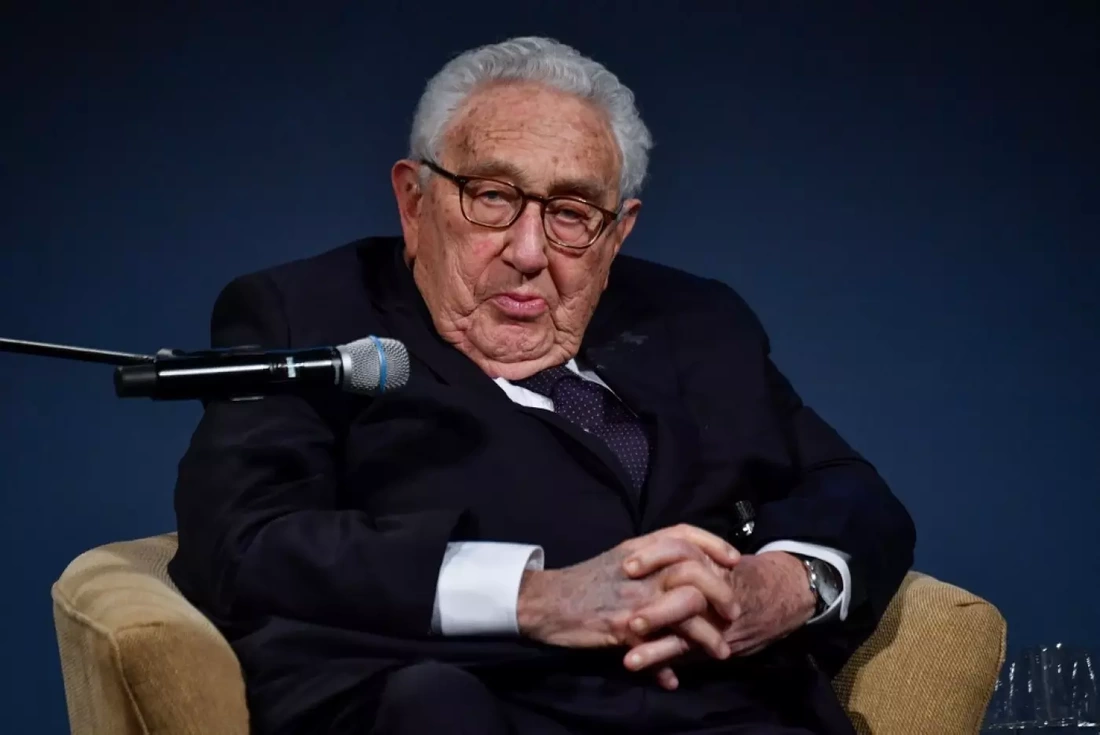
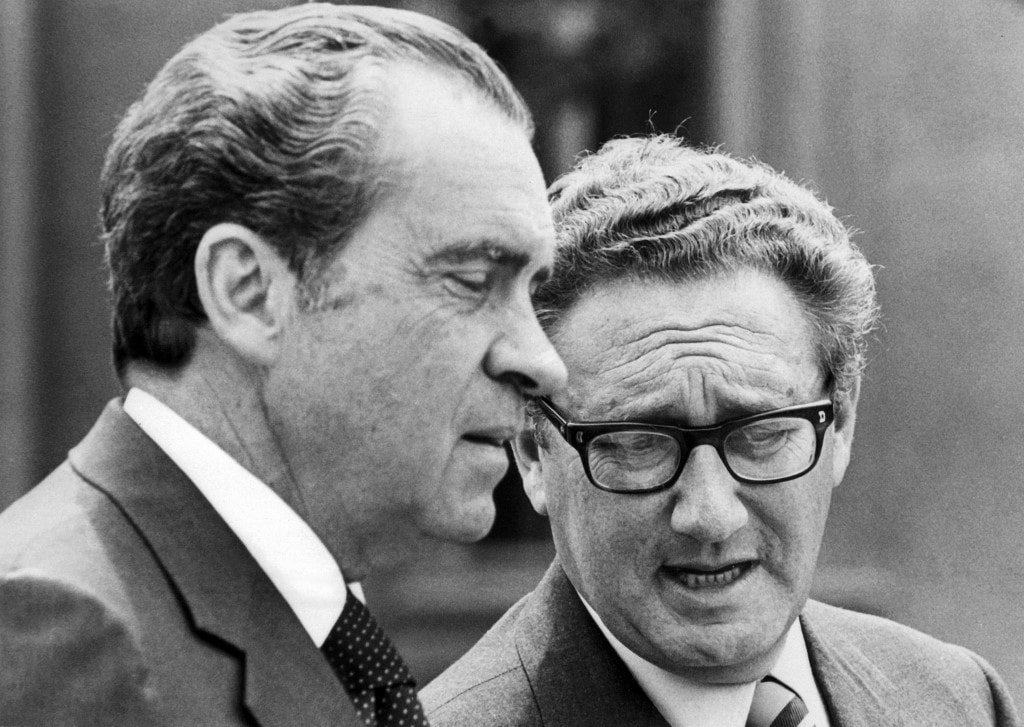
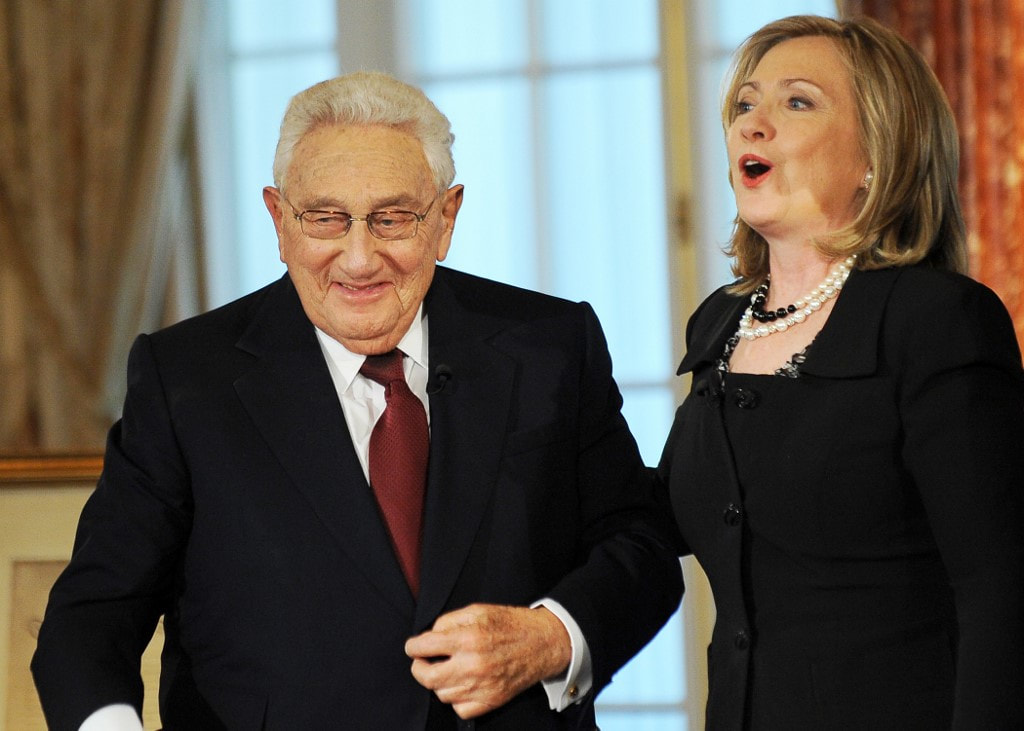


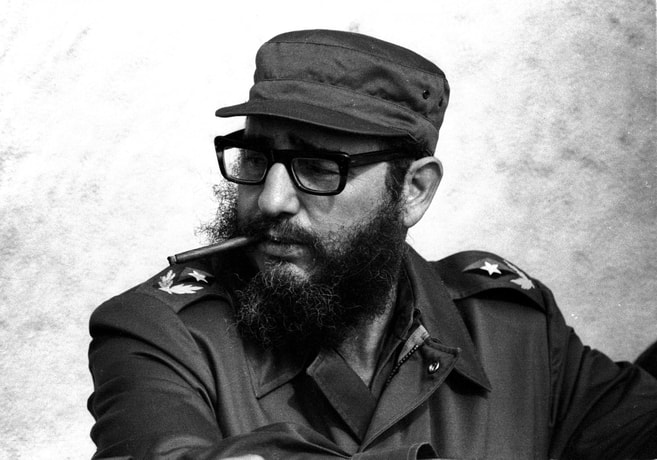
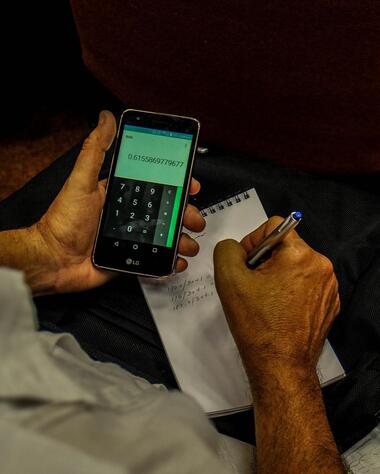
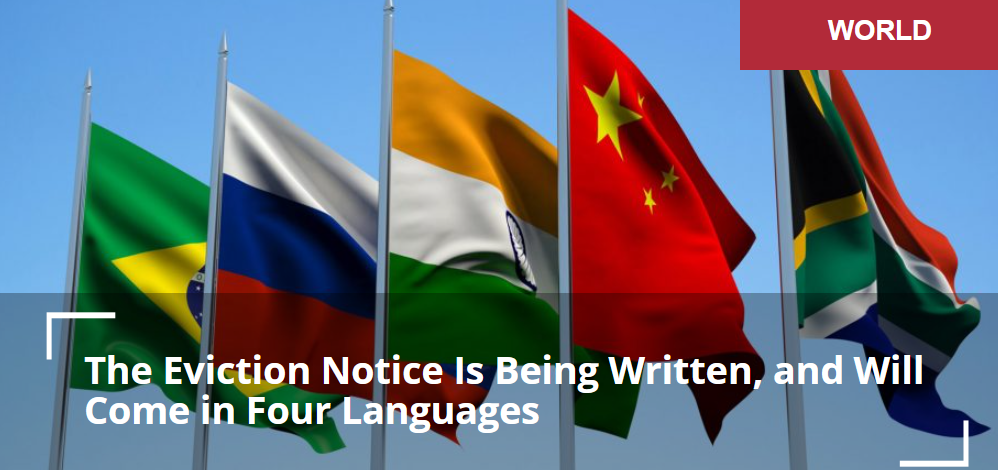
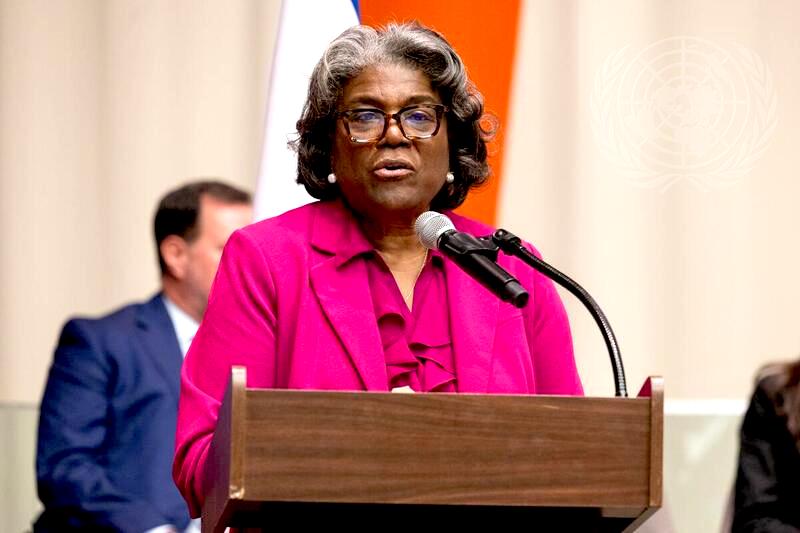
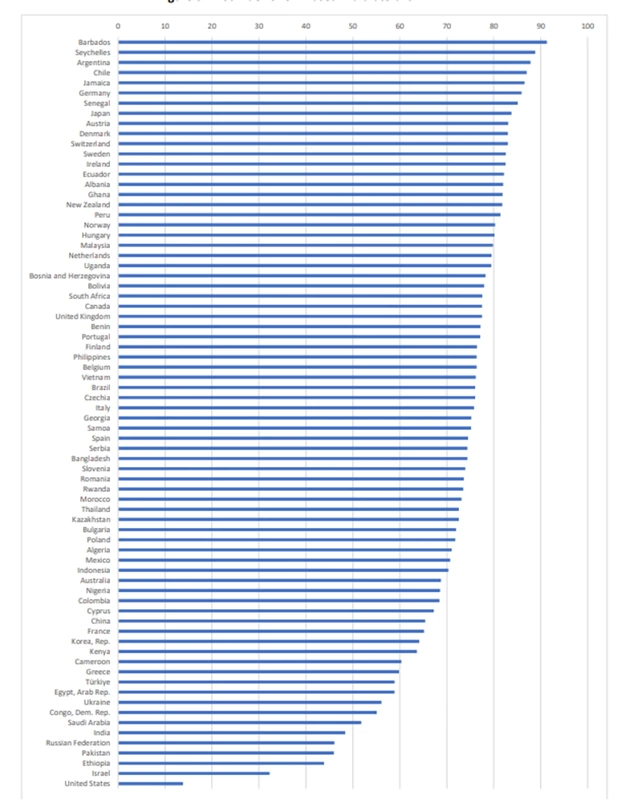
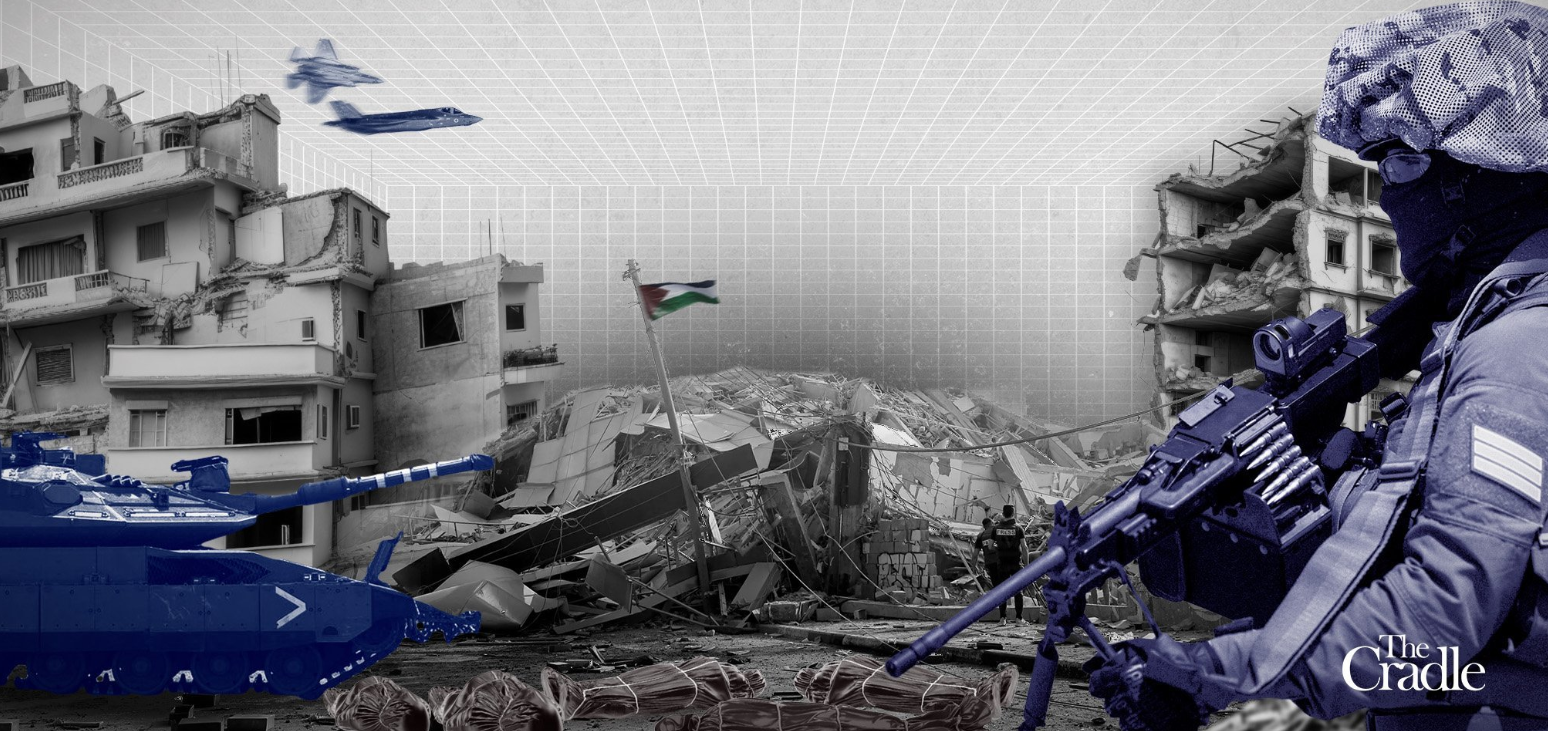
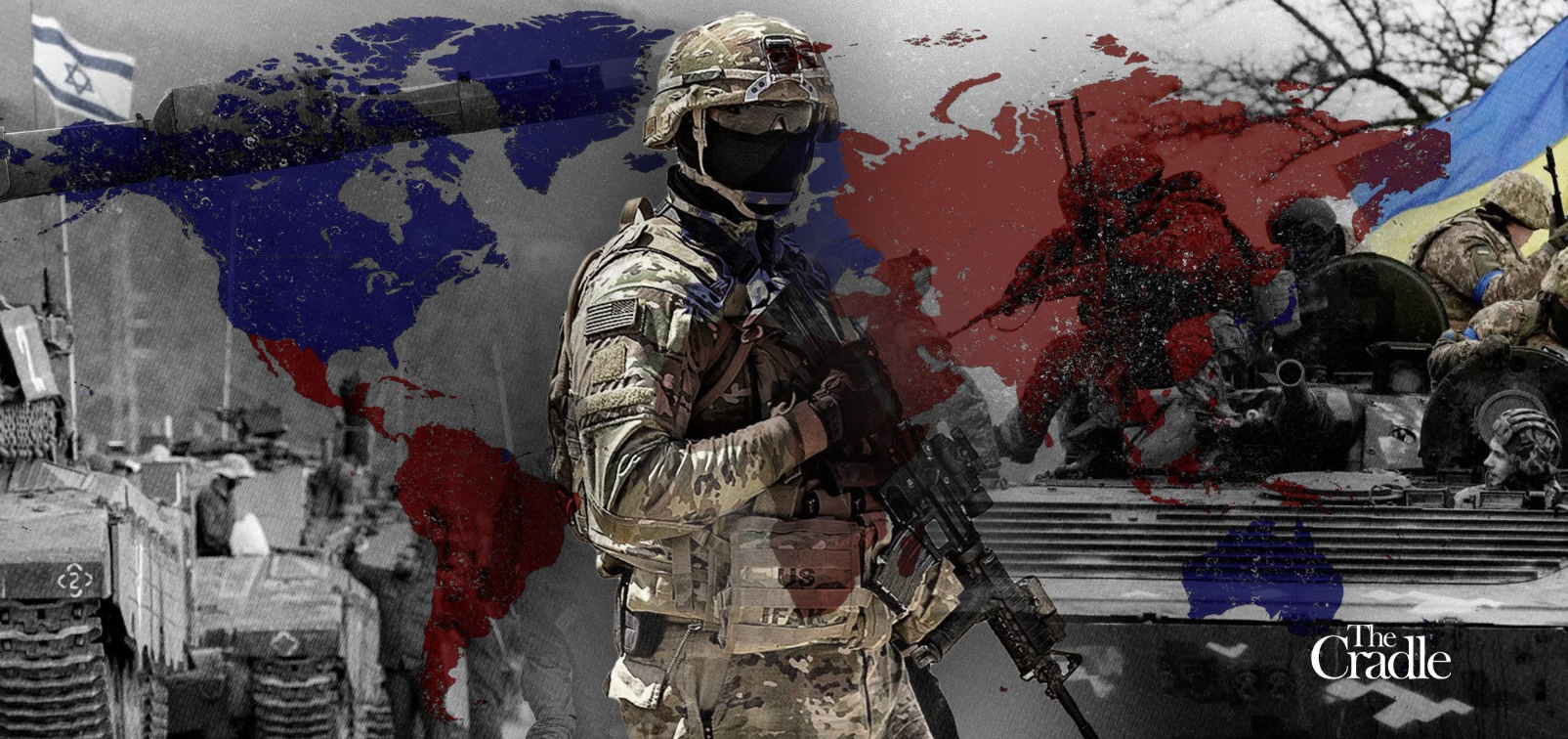

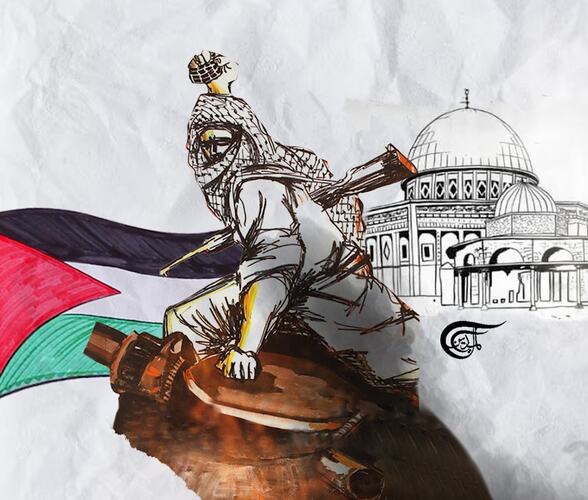
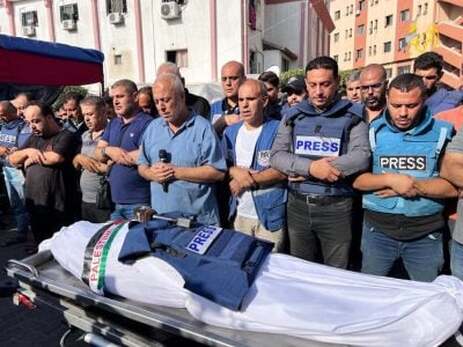
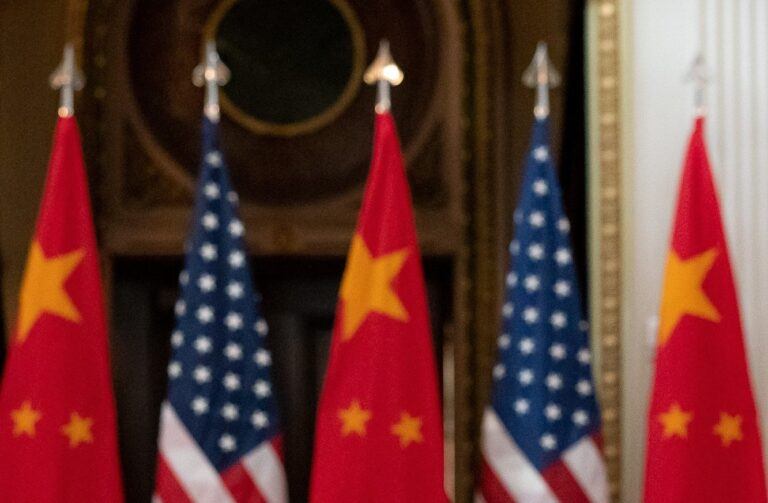

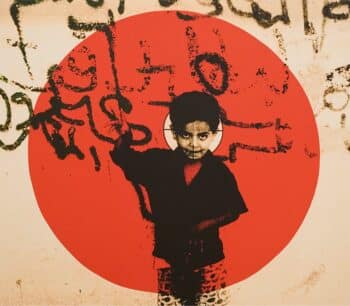
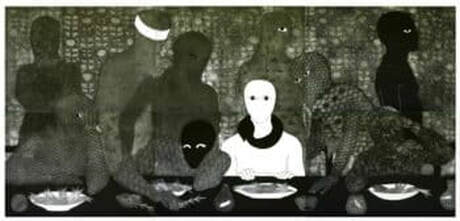
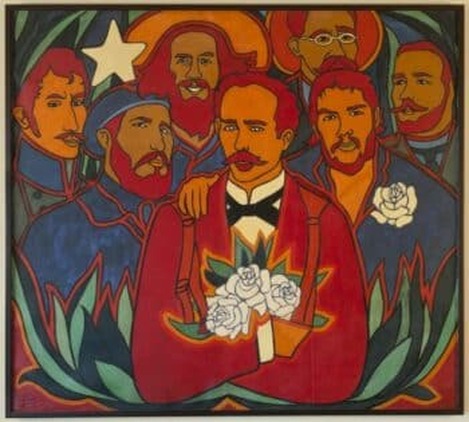
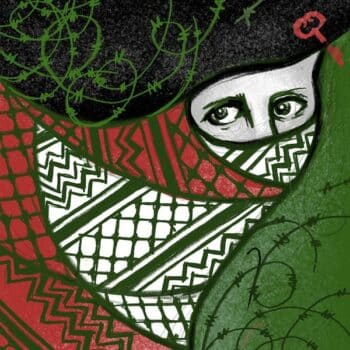

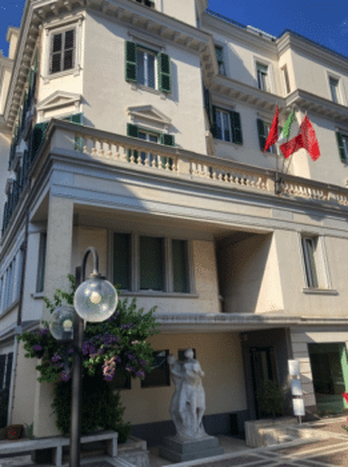
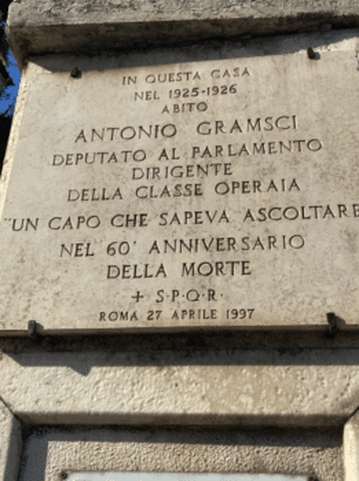
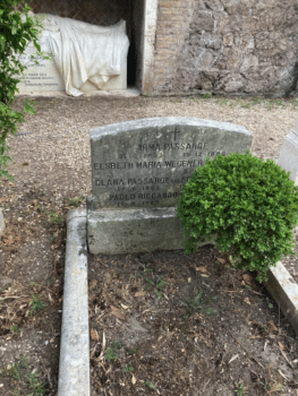
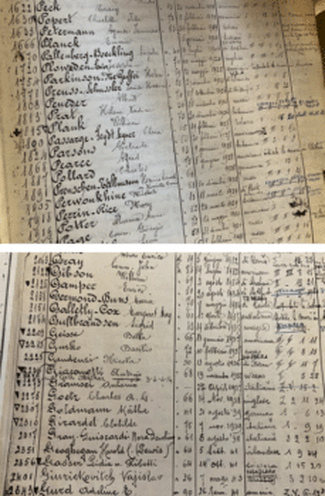
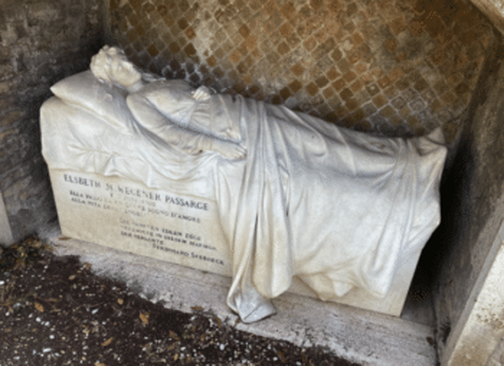

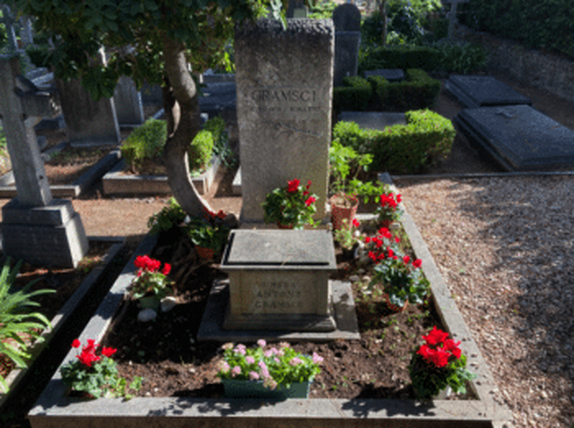
 RSS Feed
RSS Feed